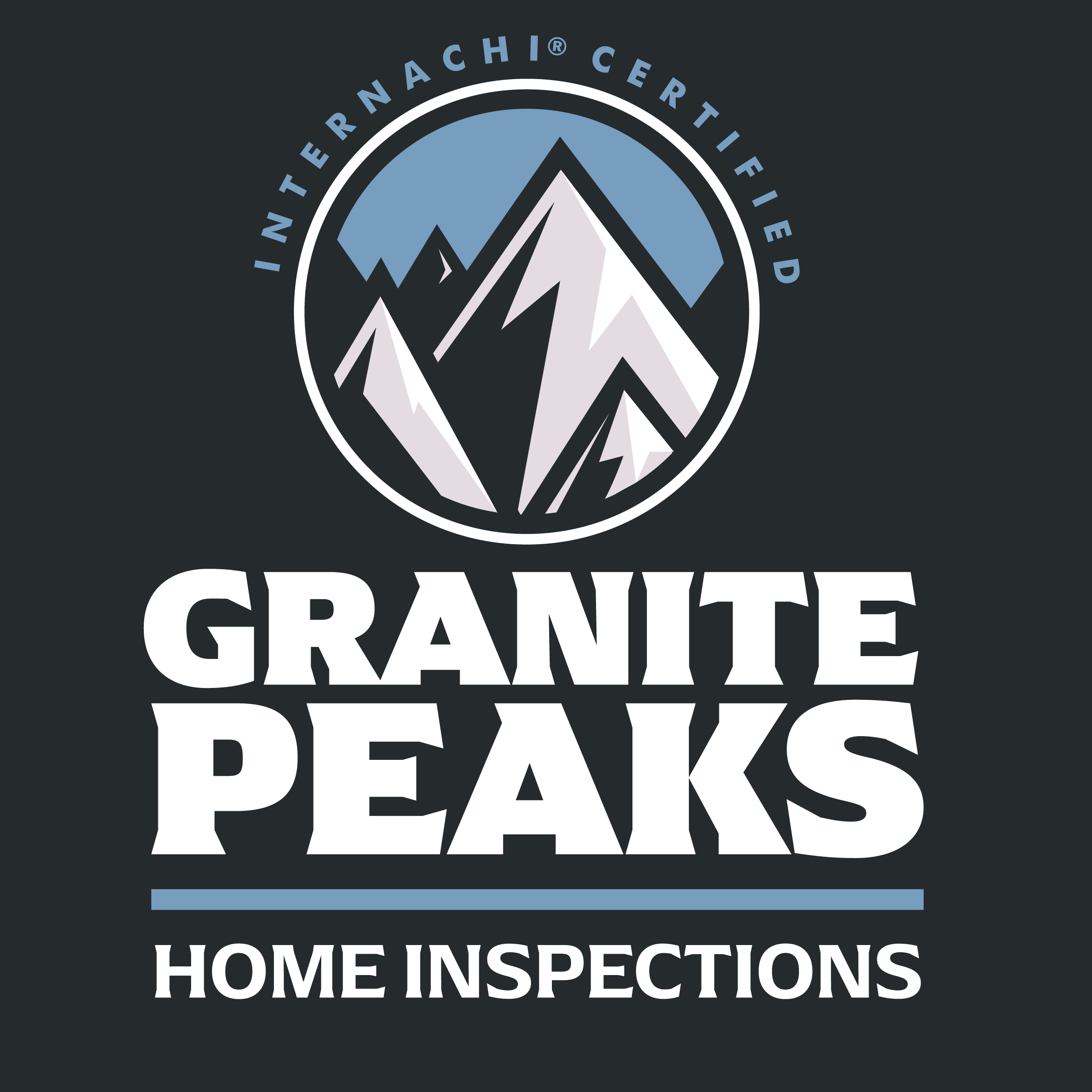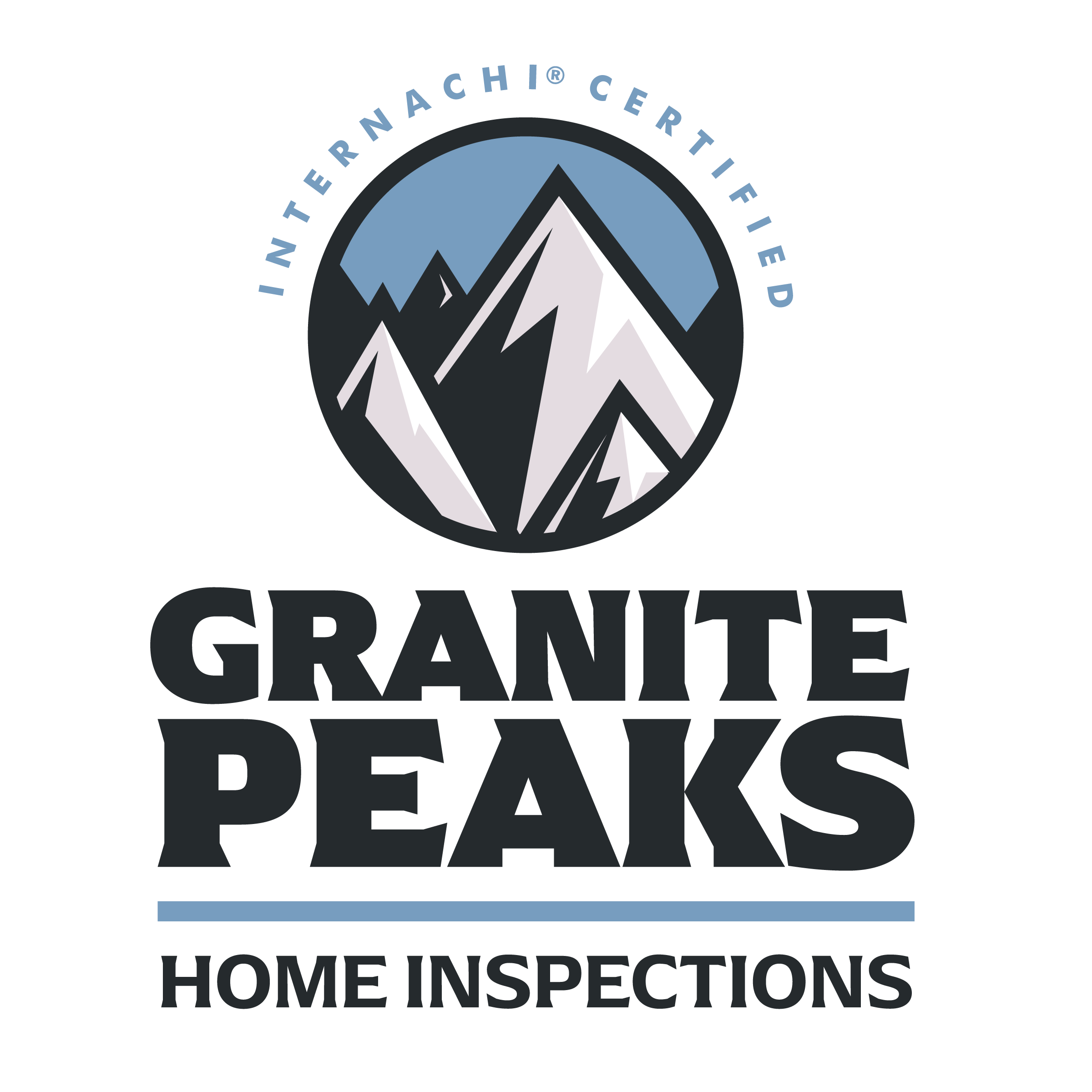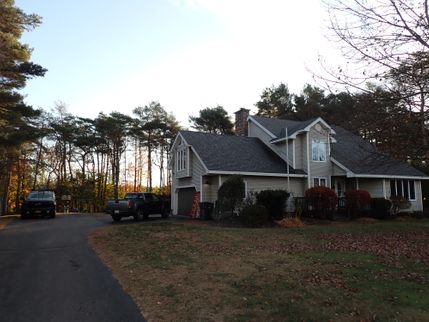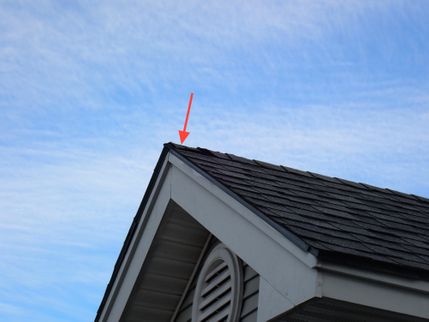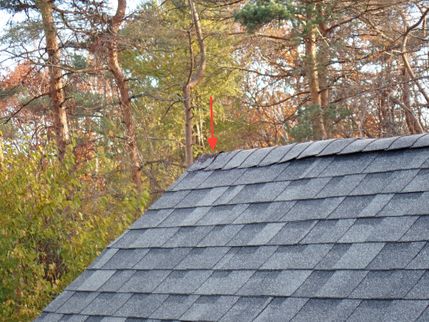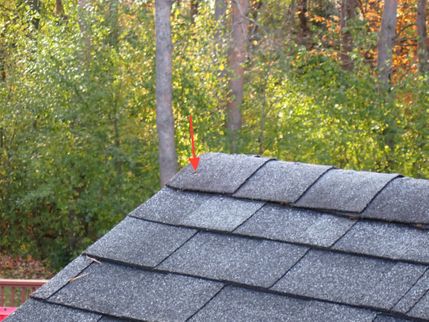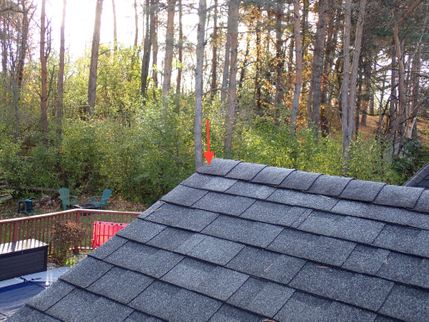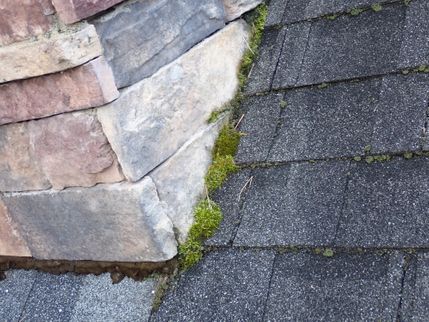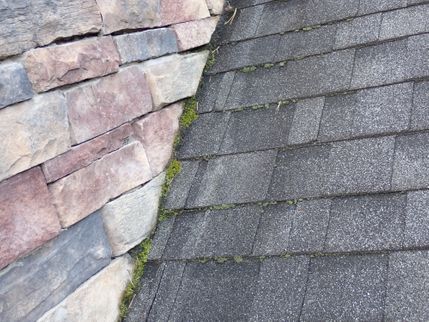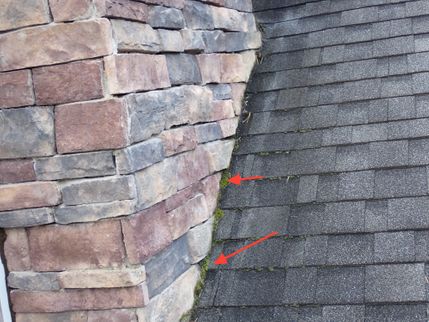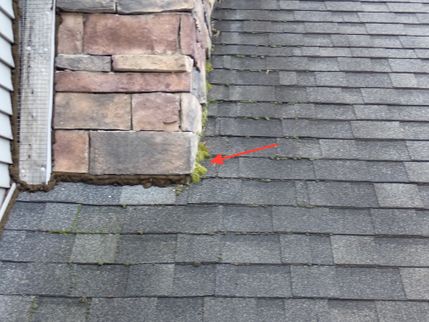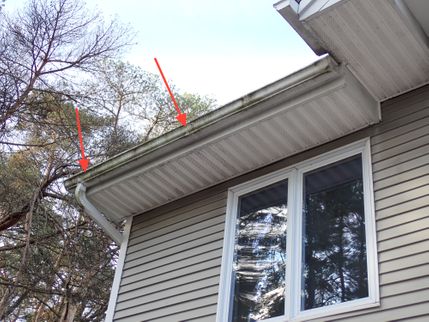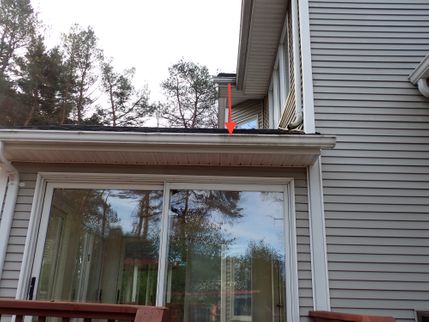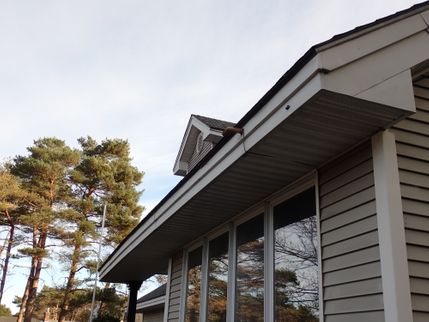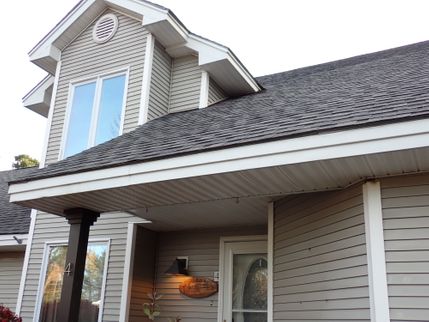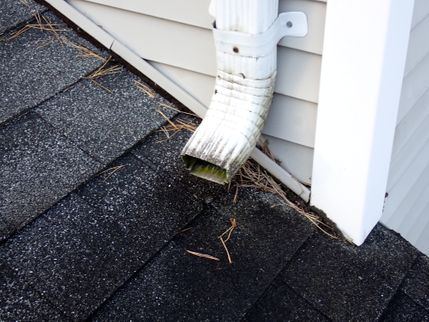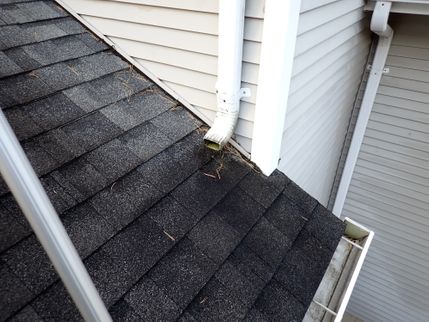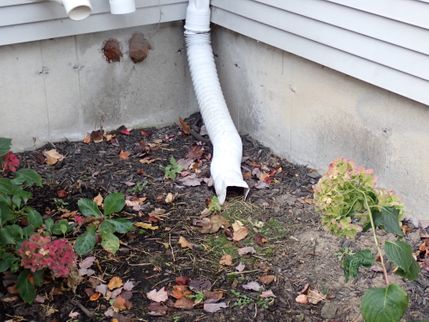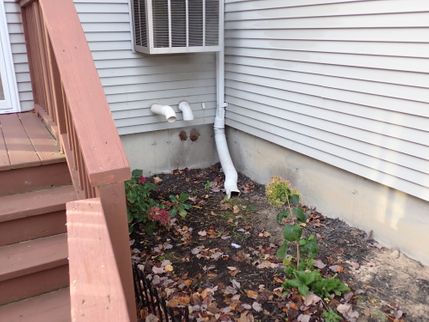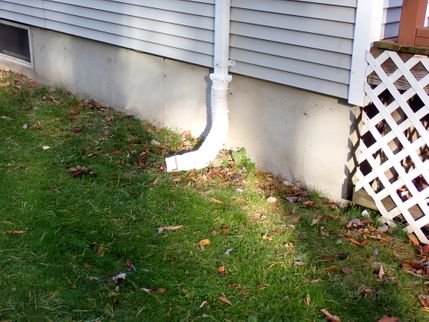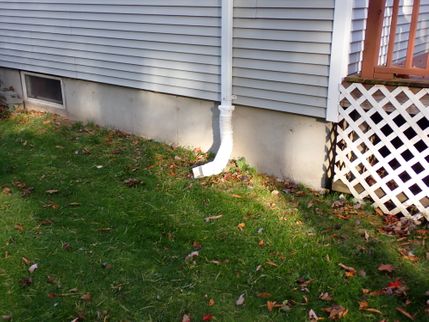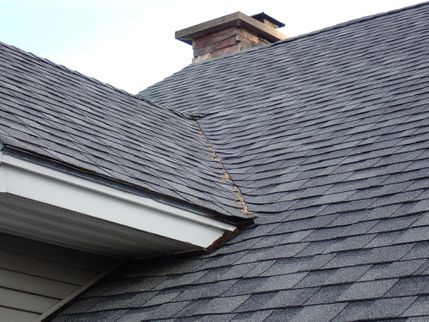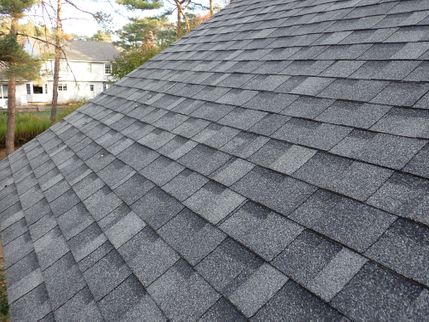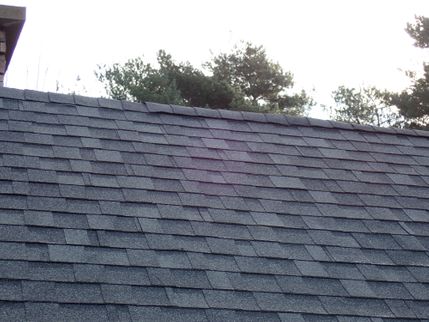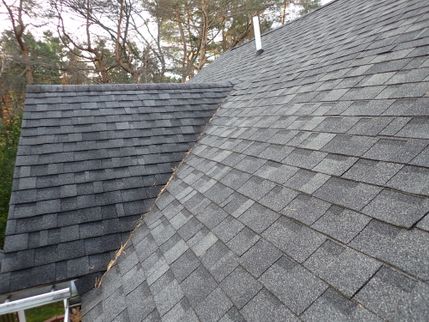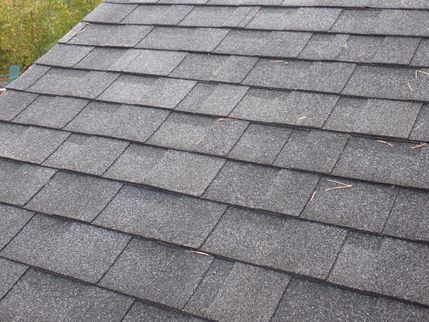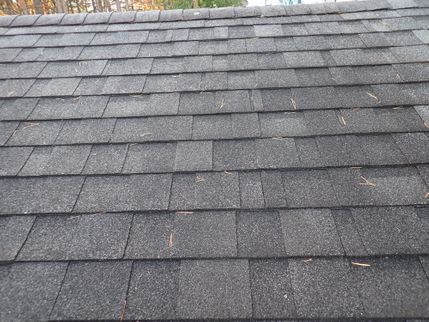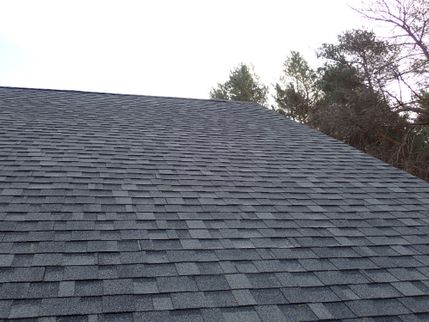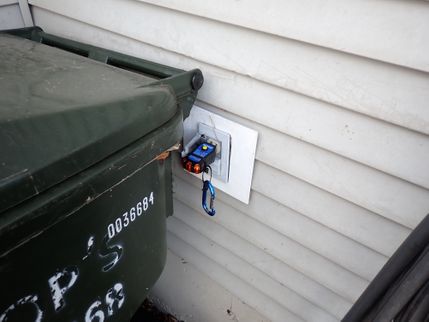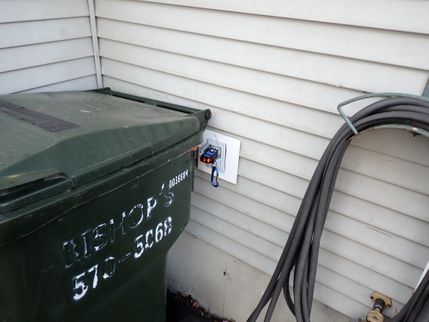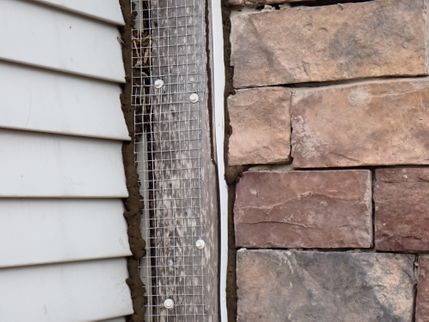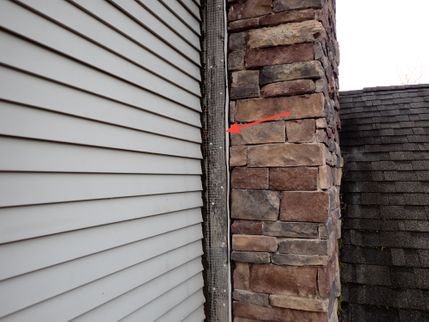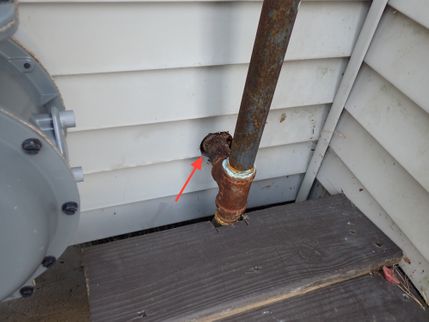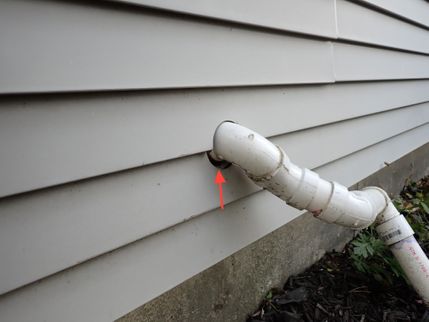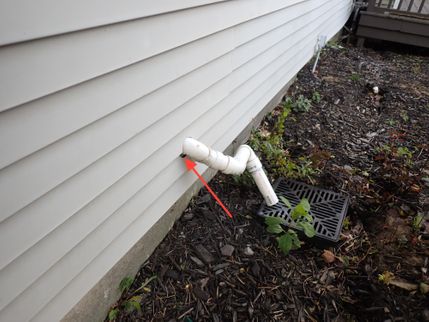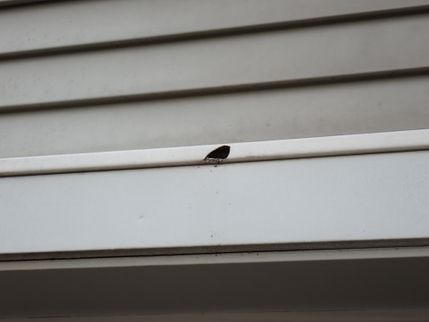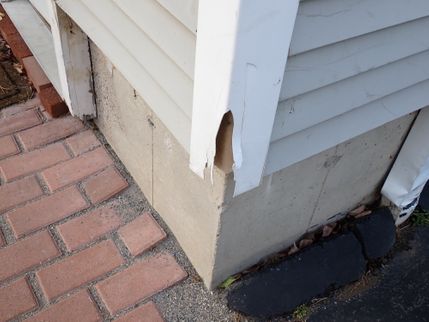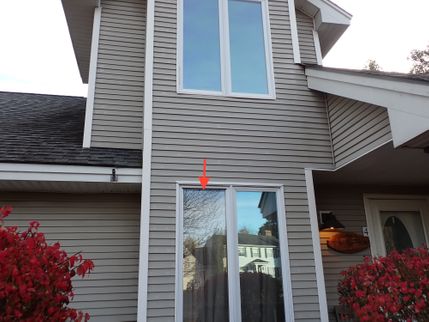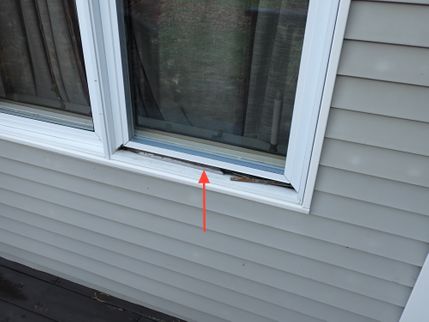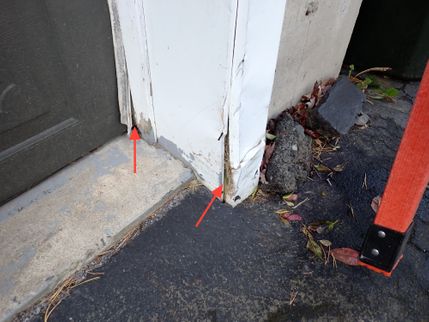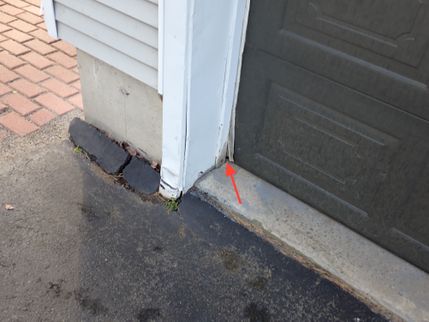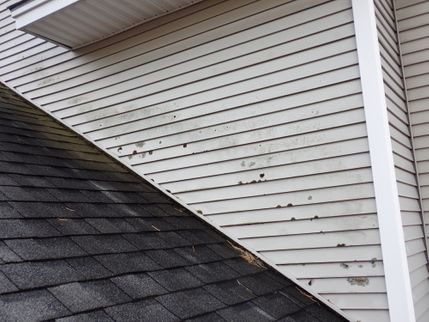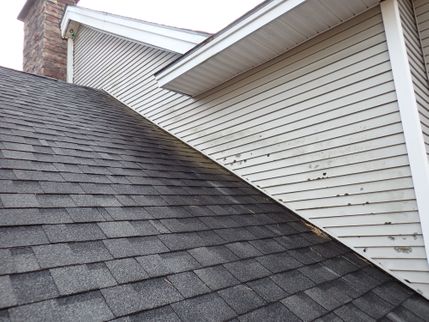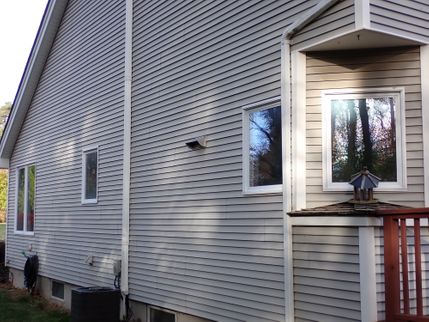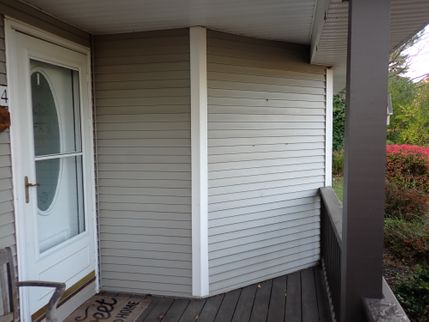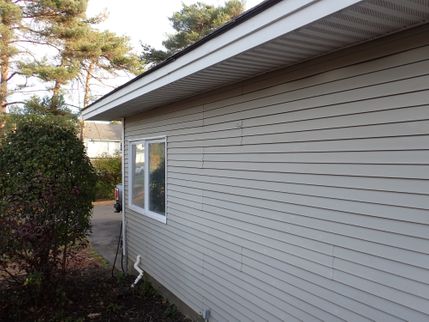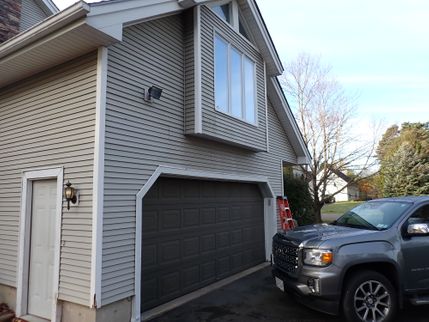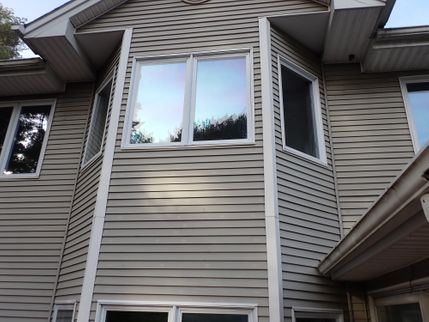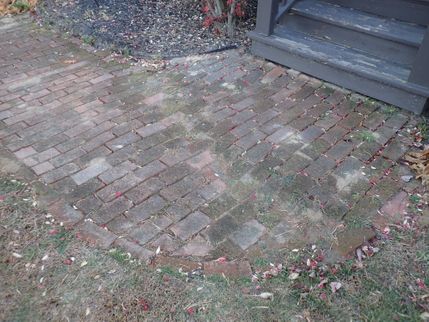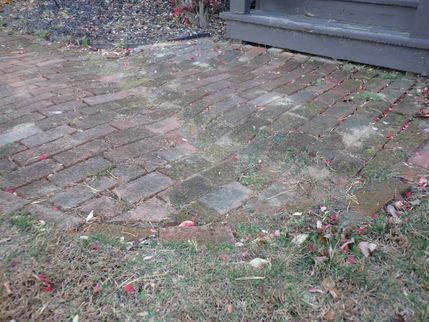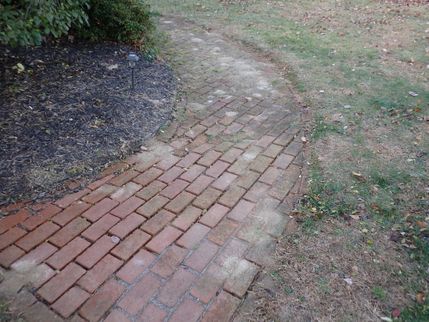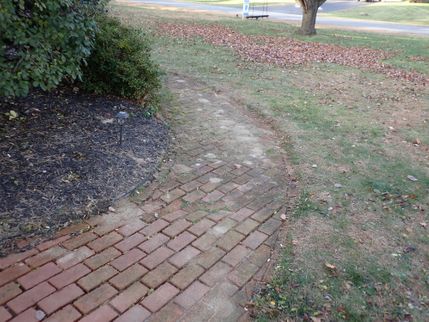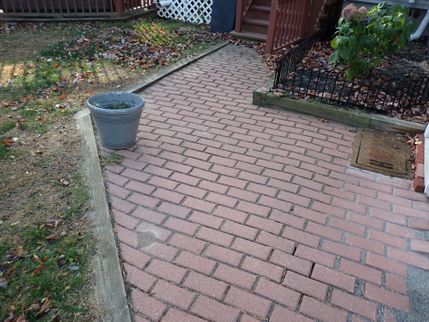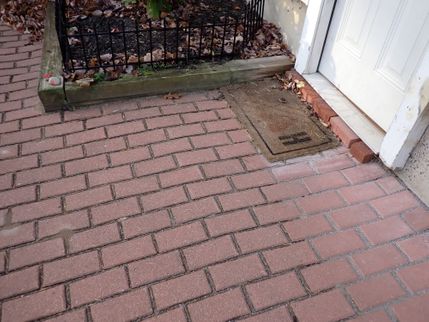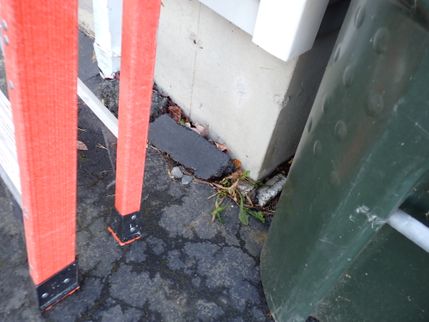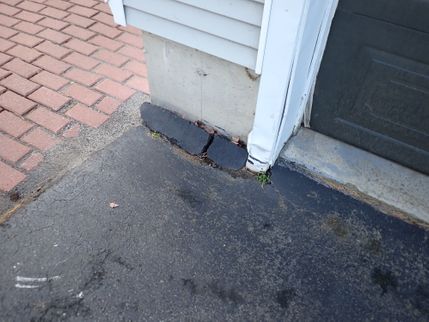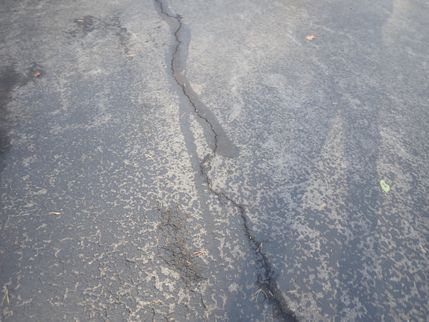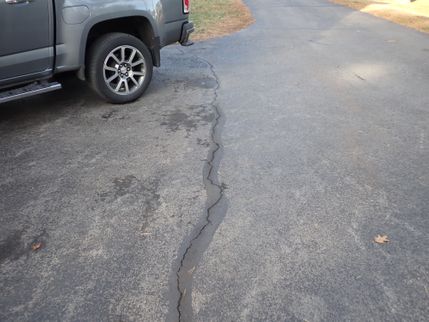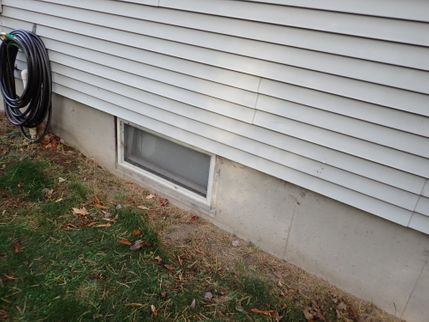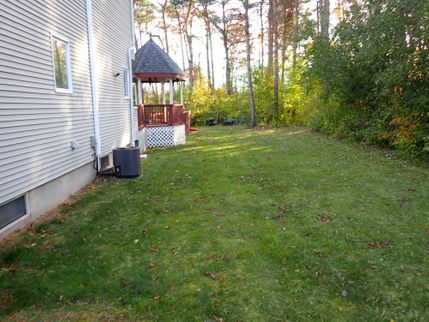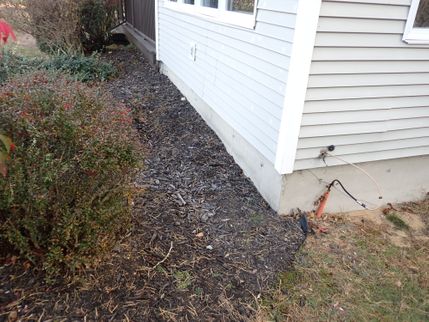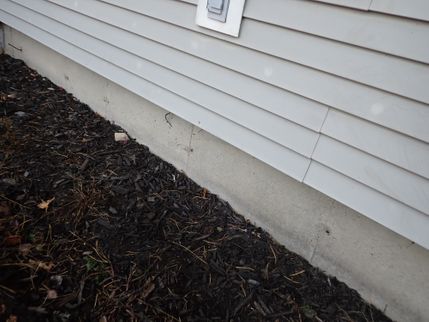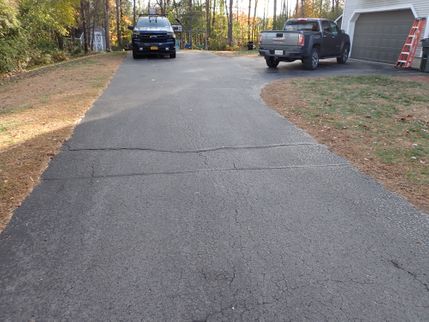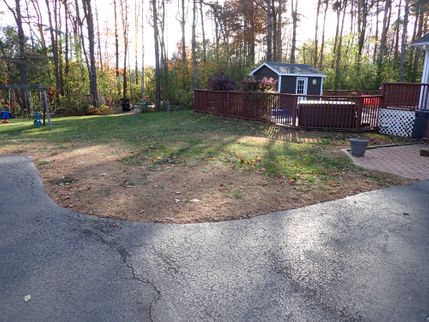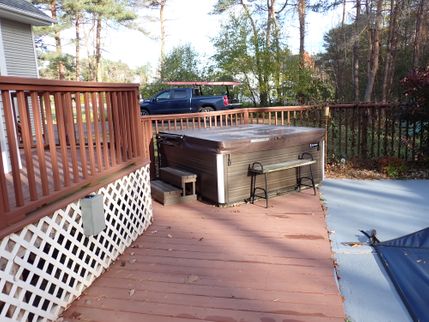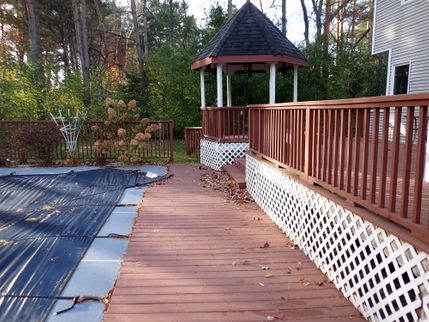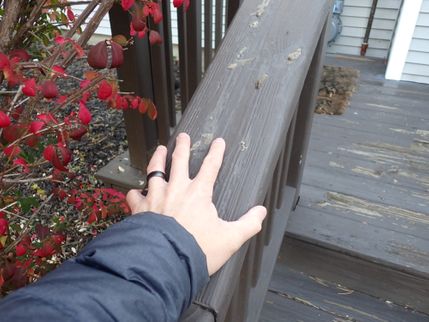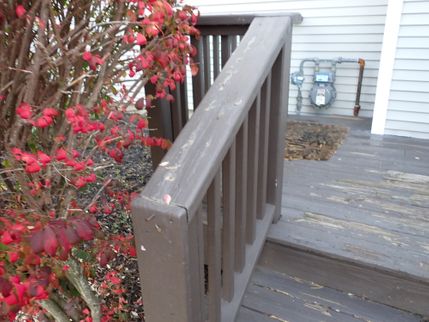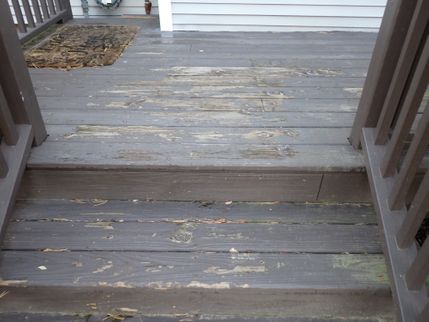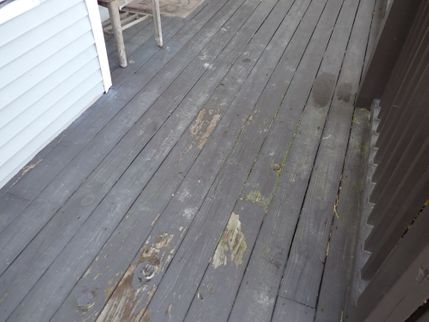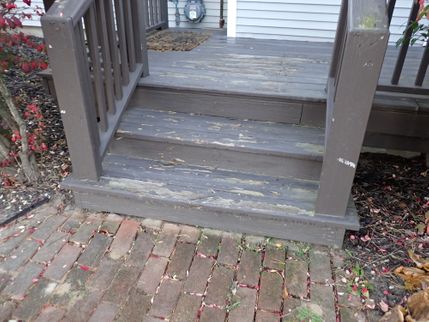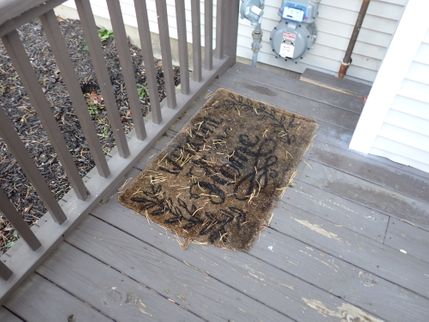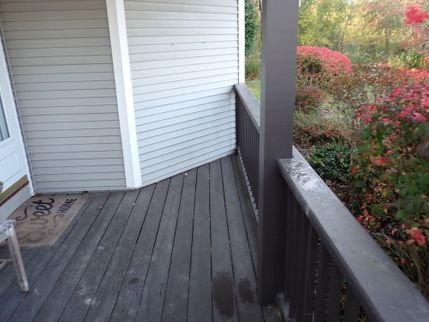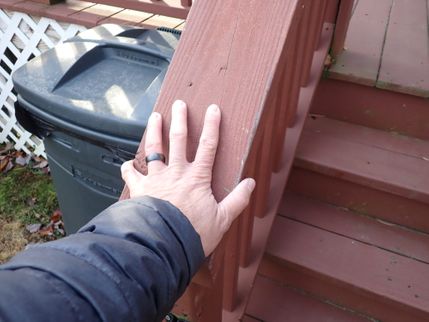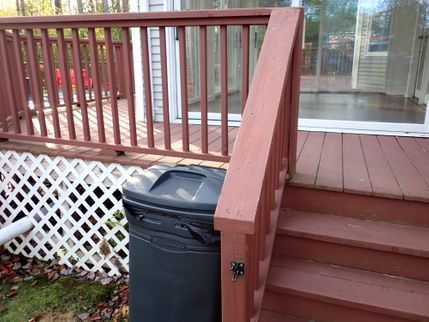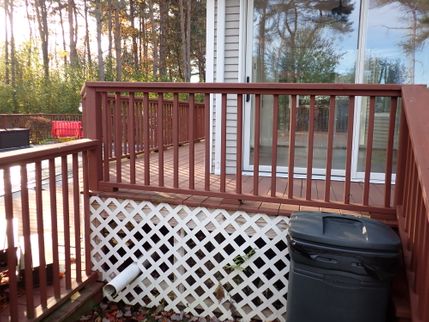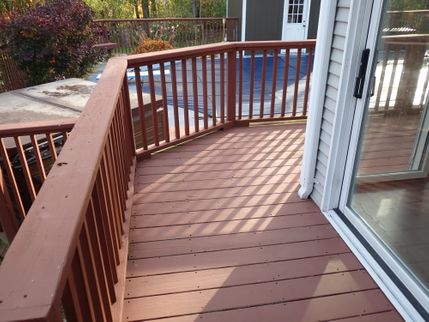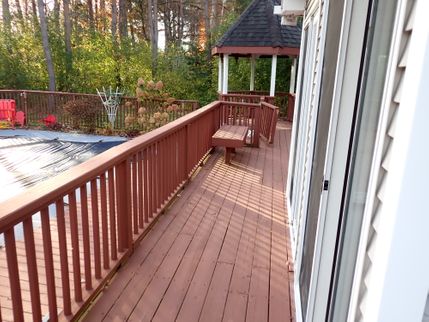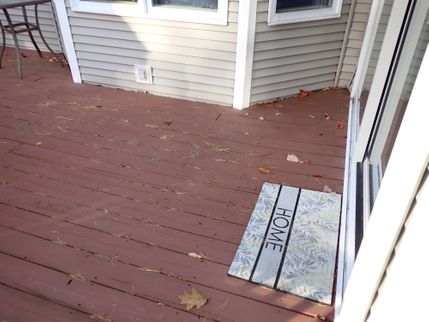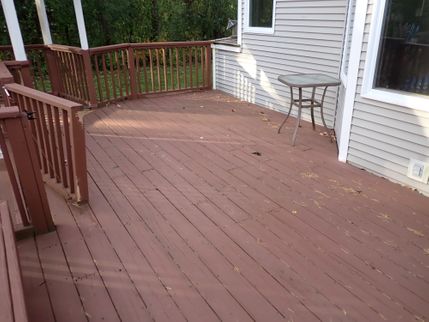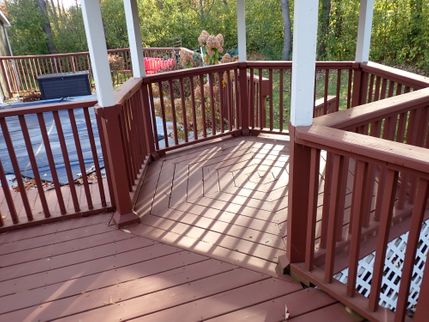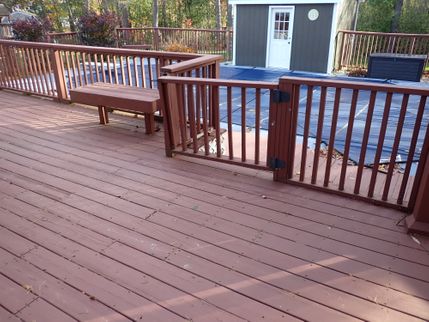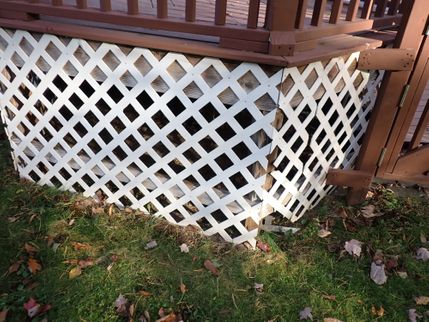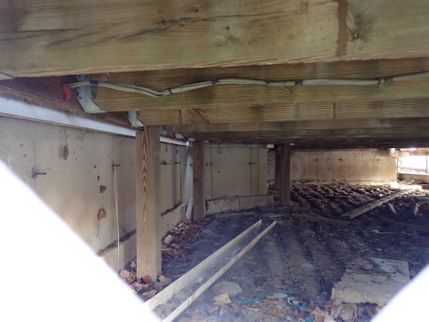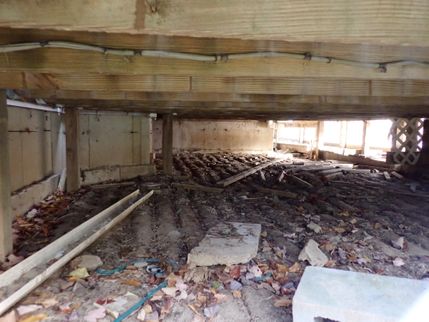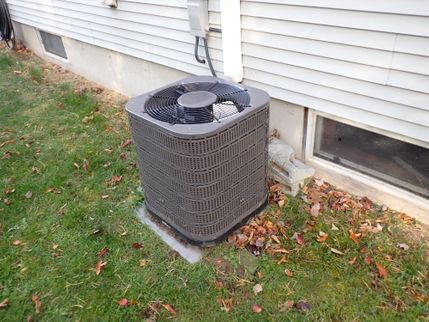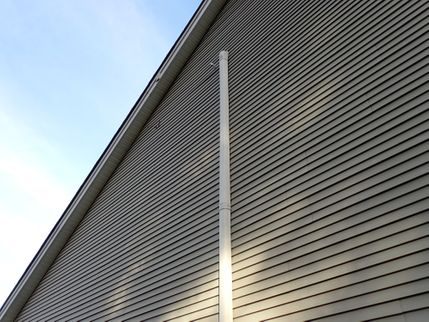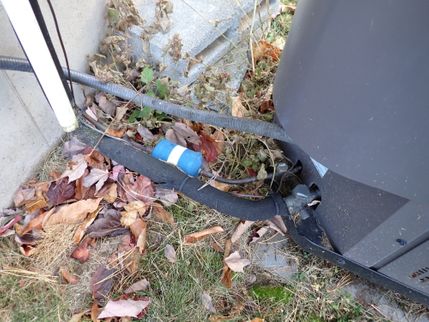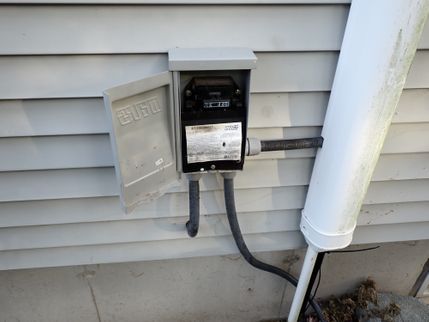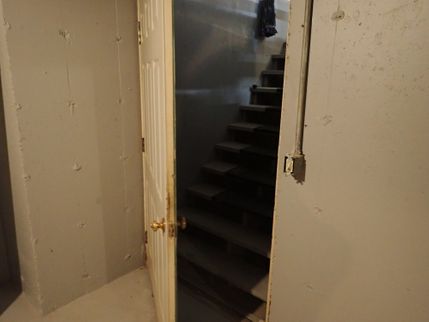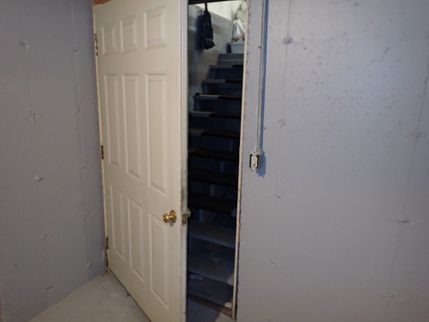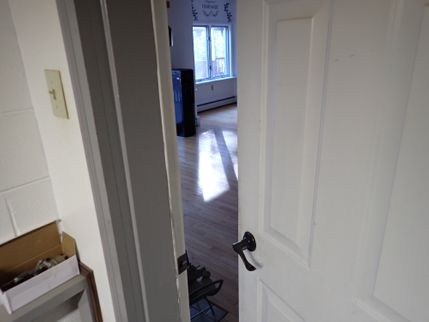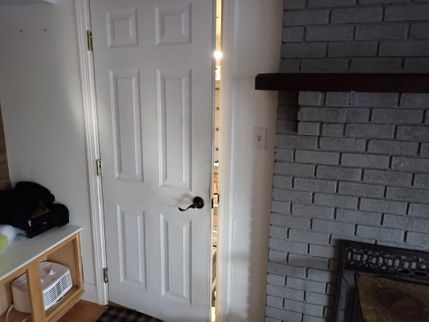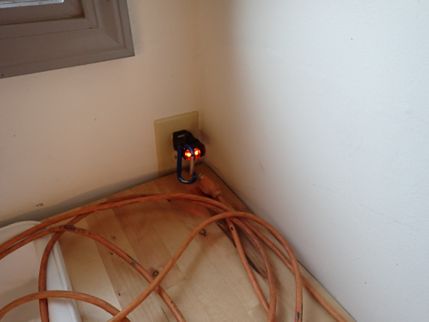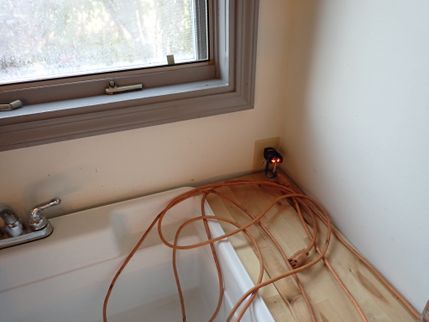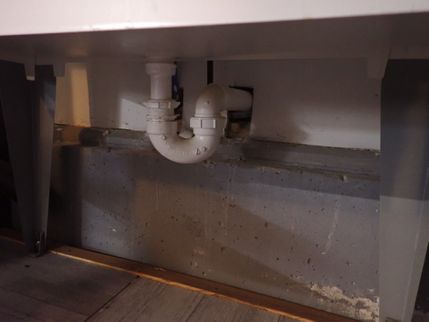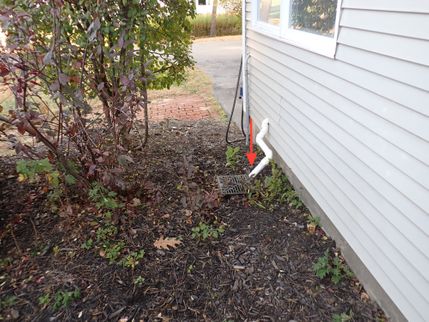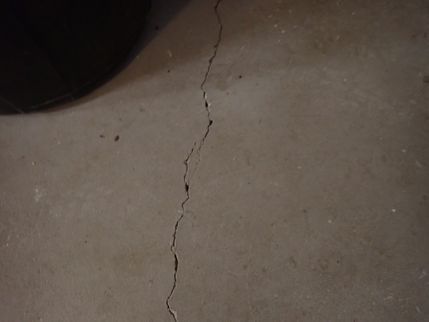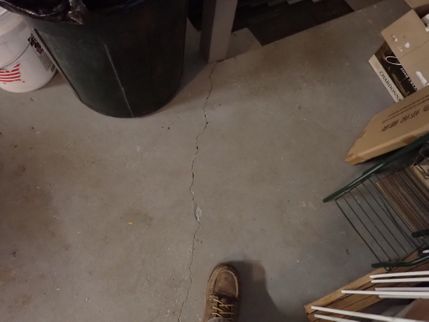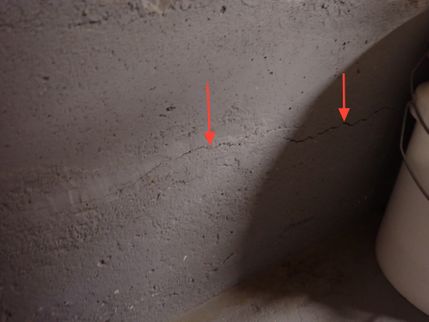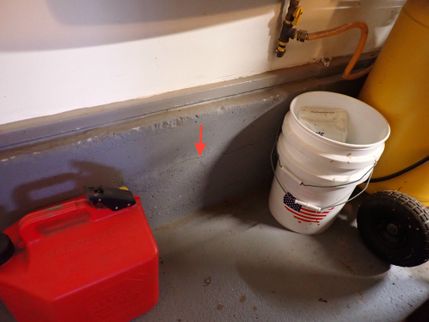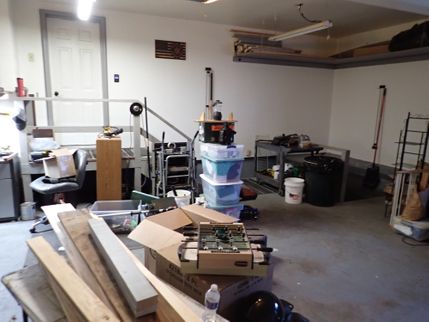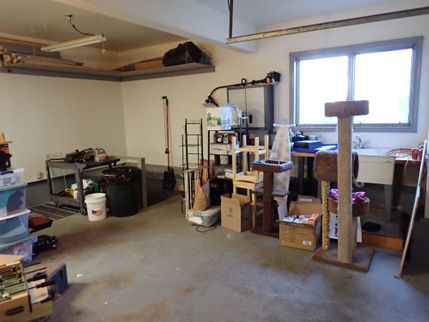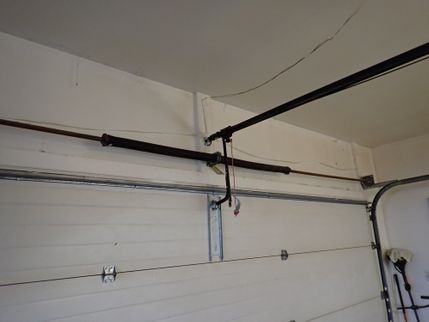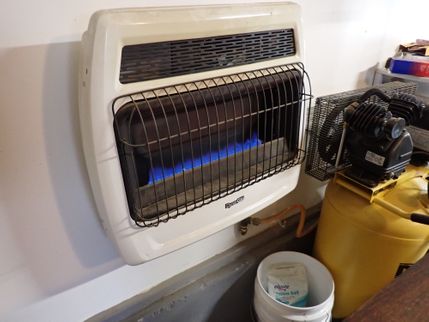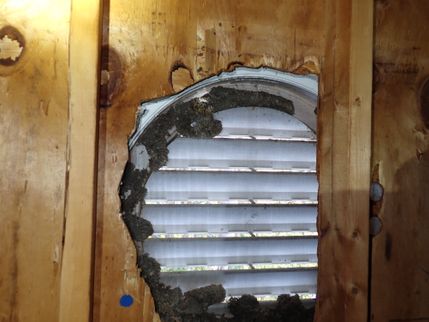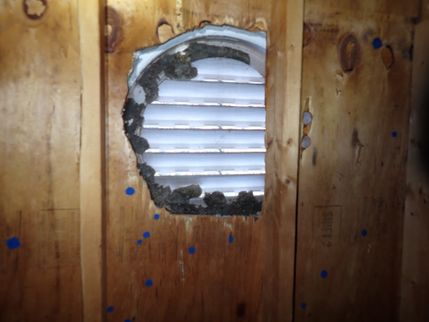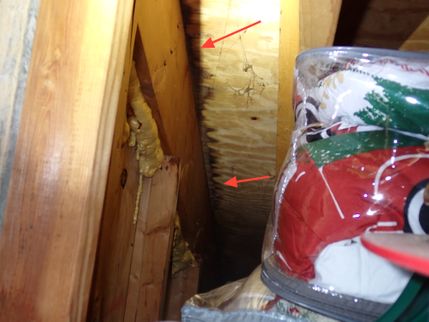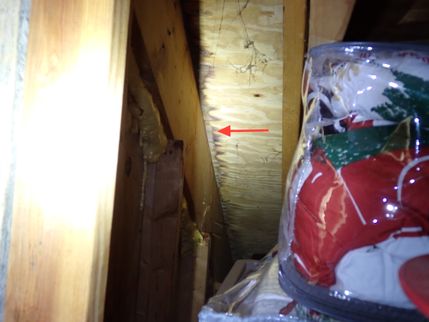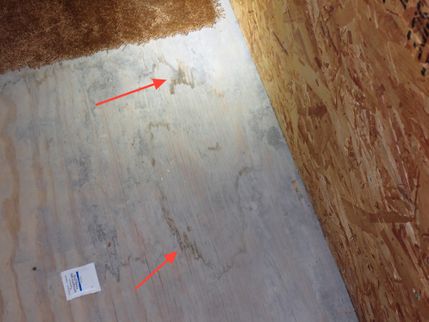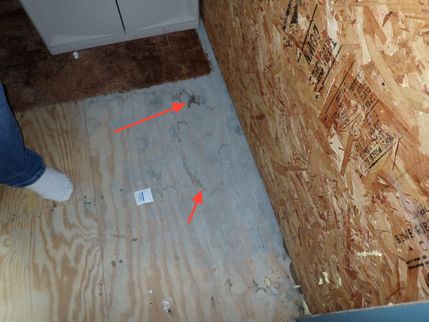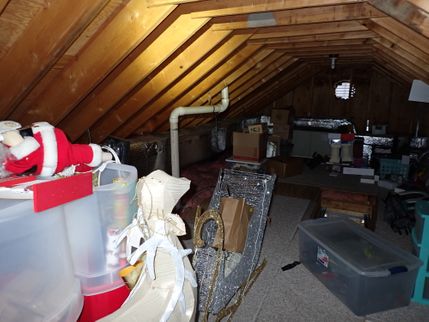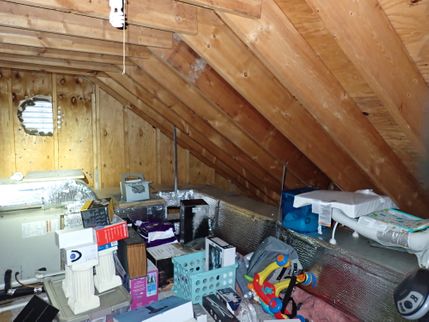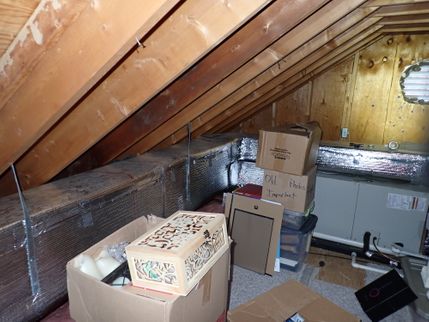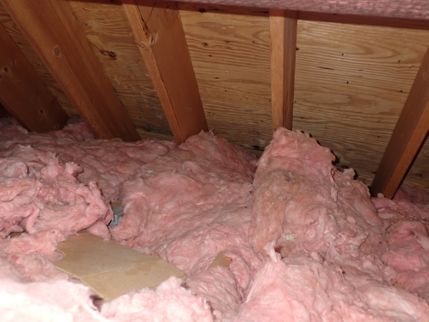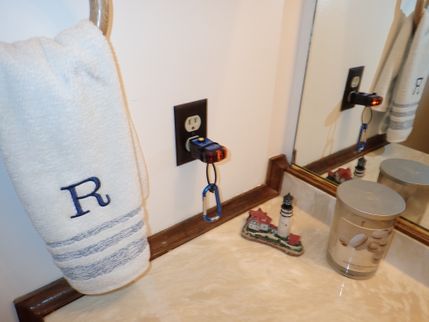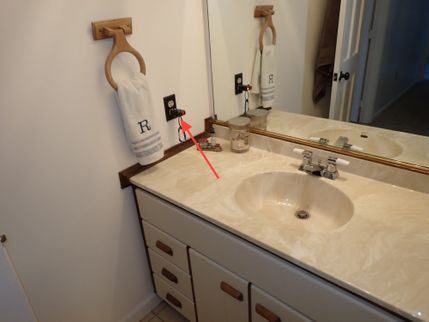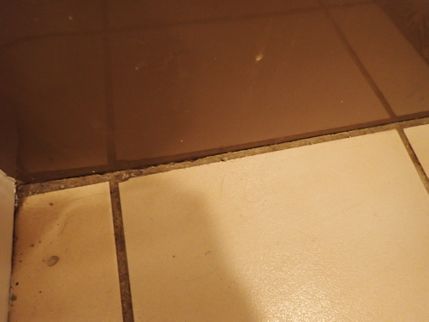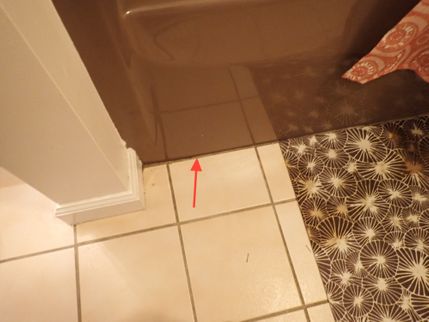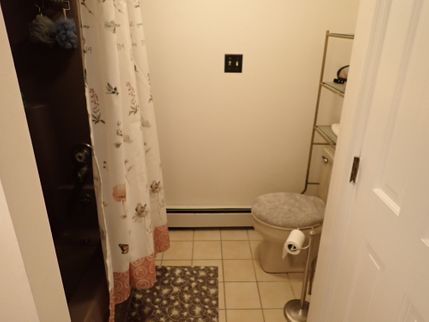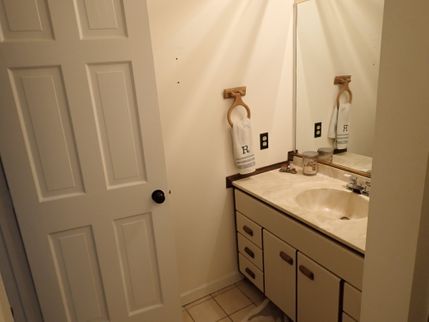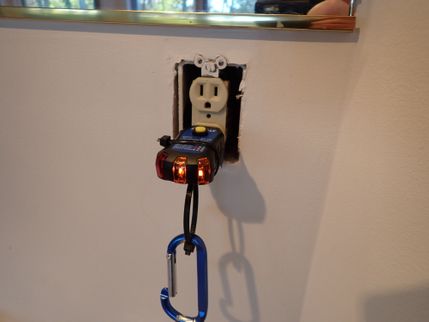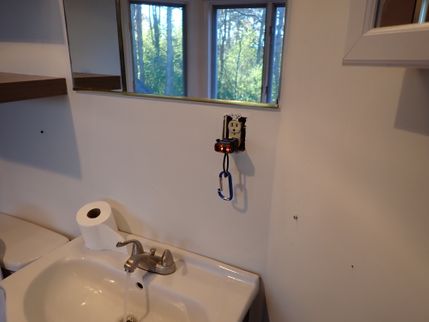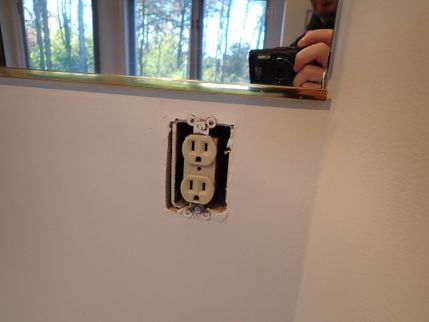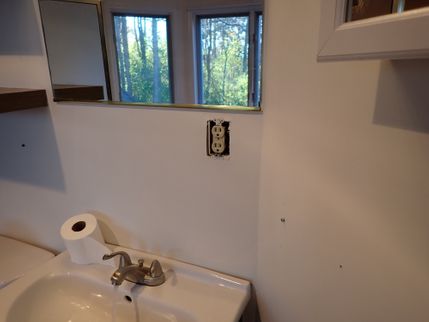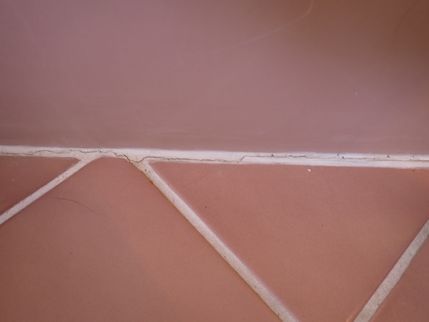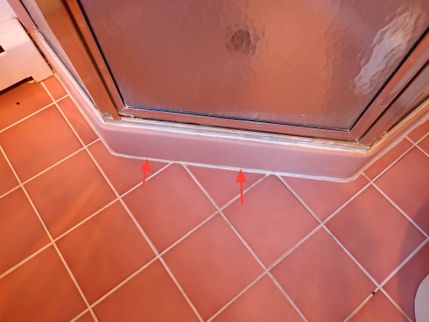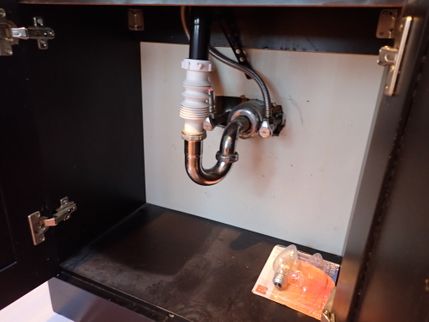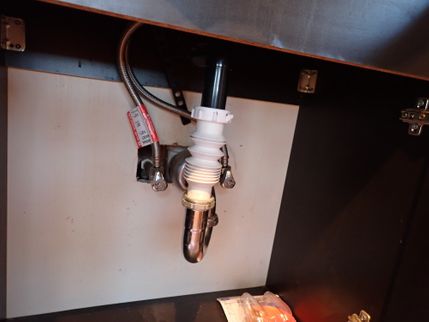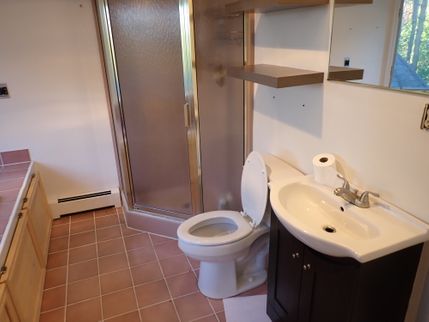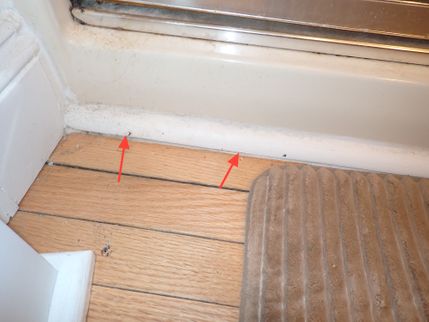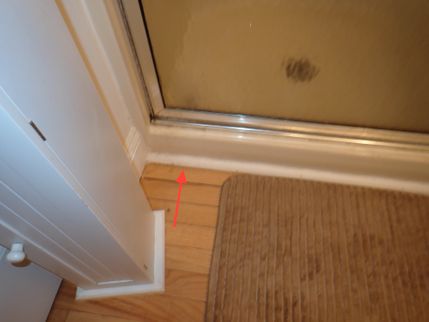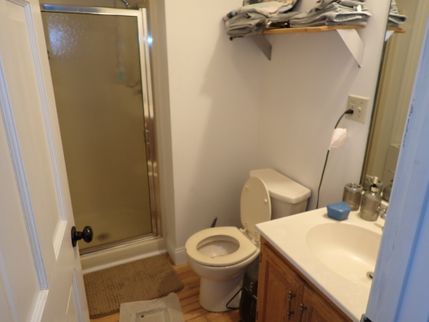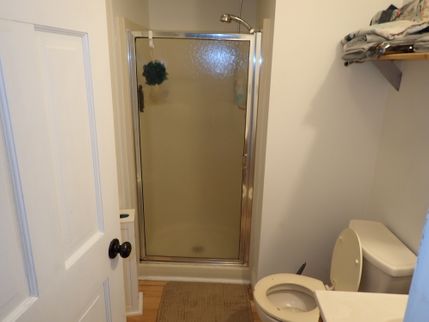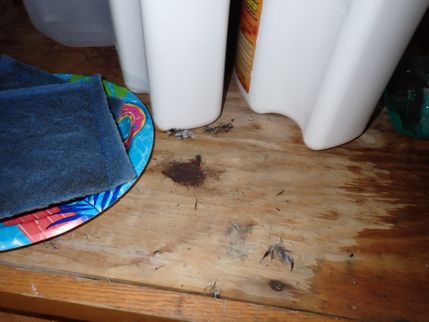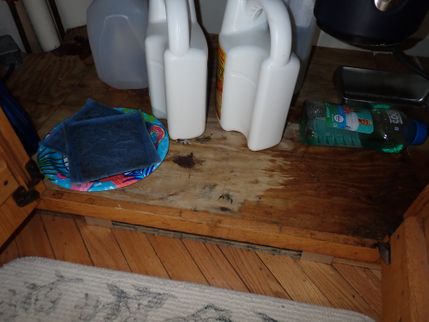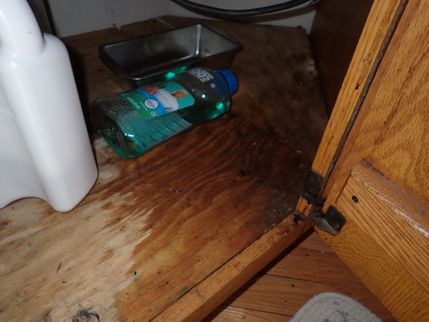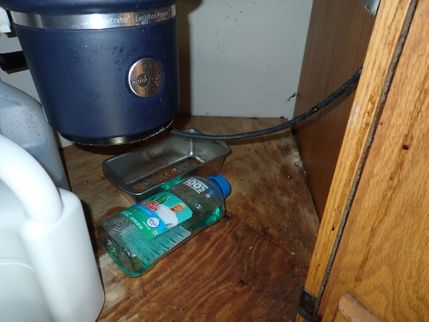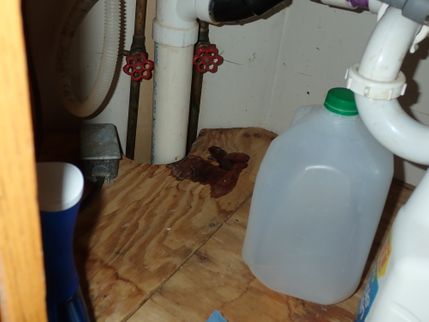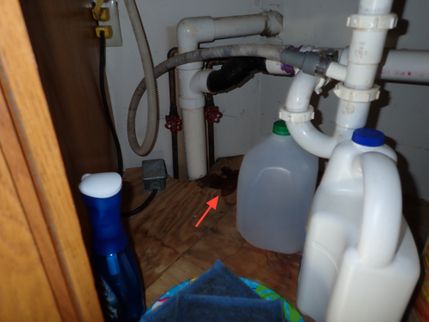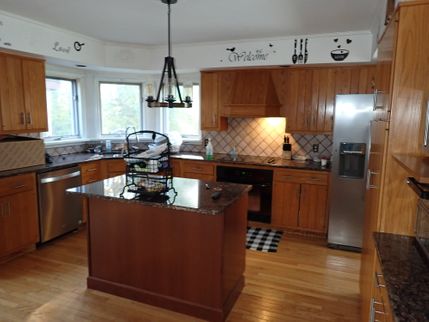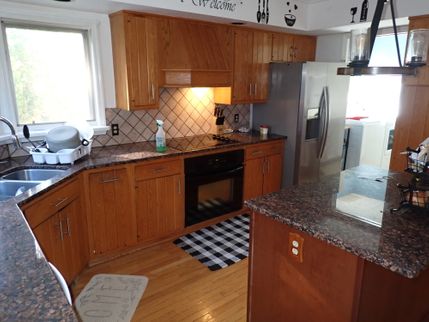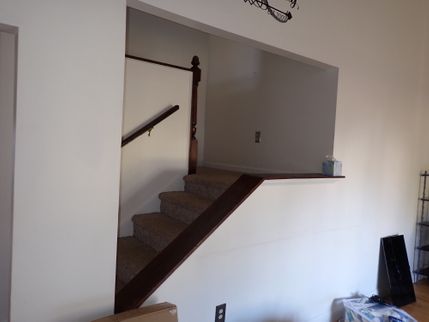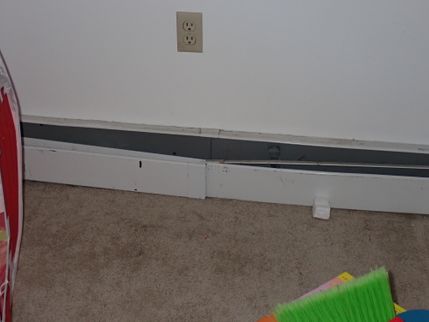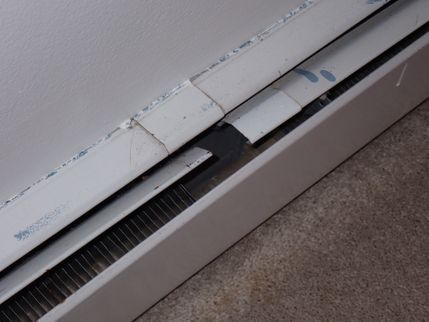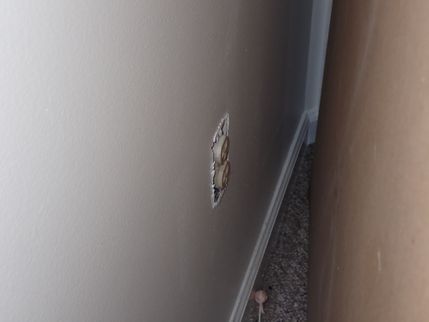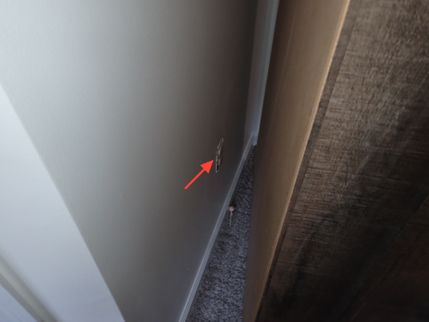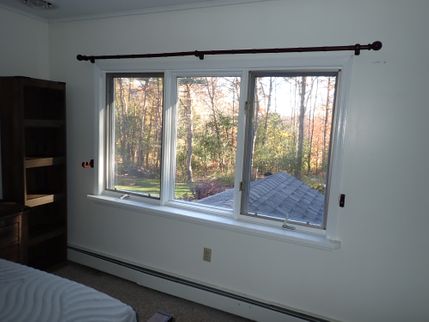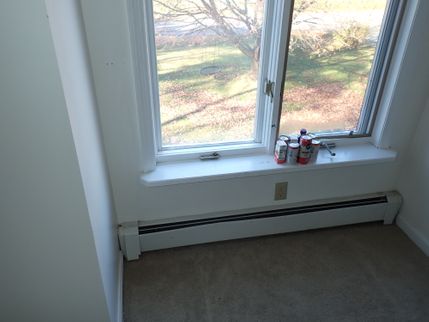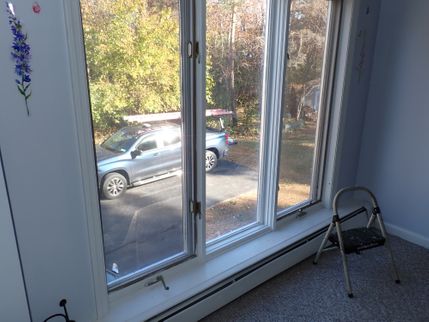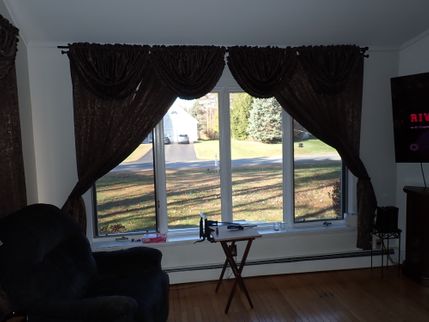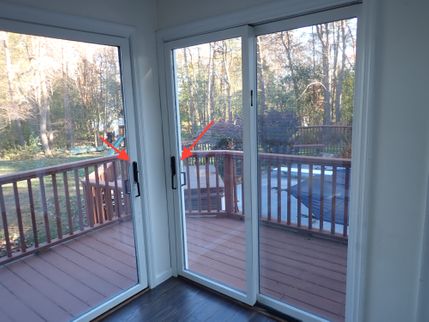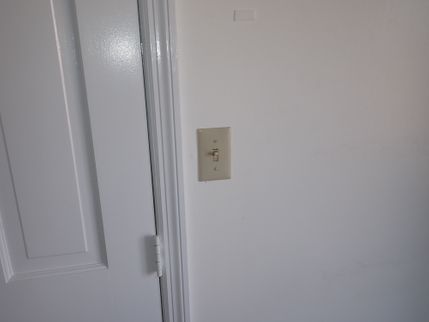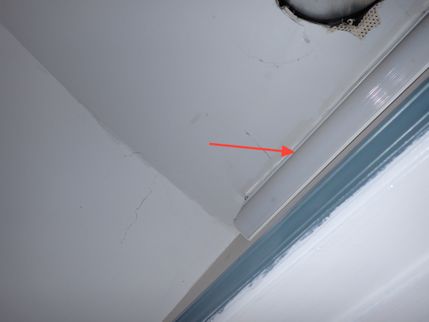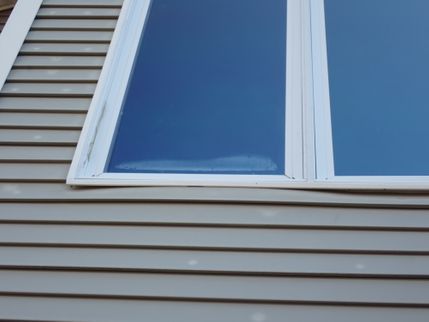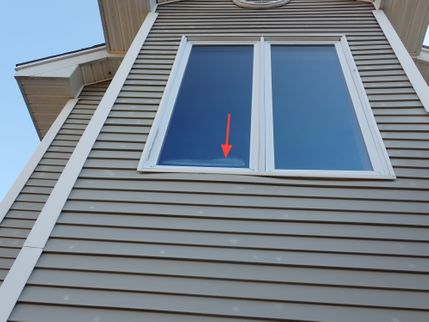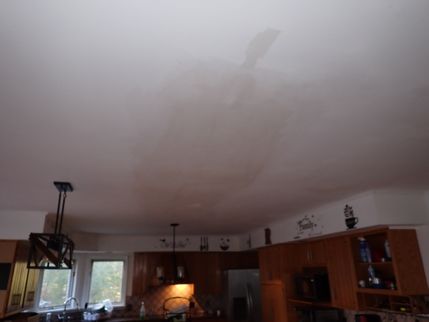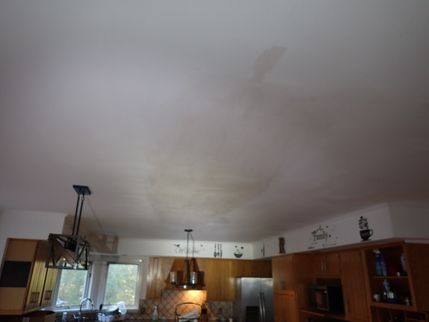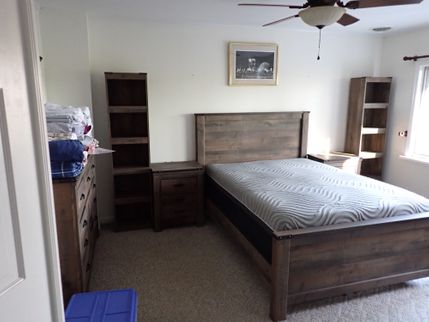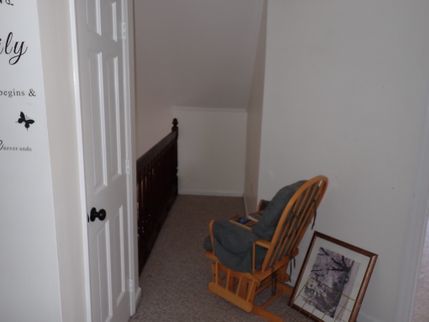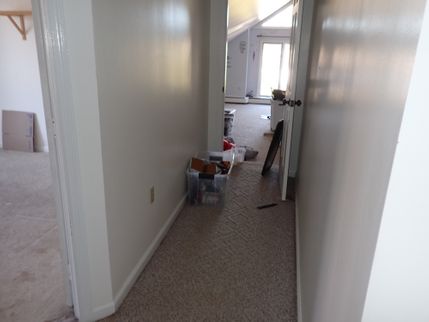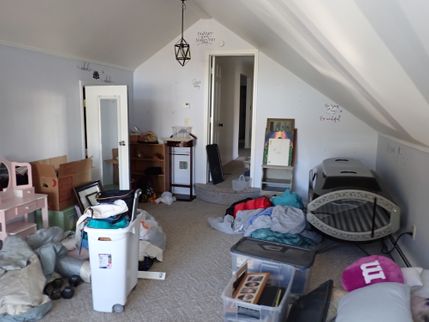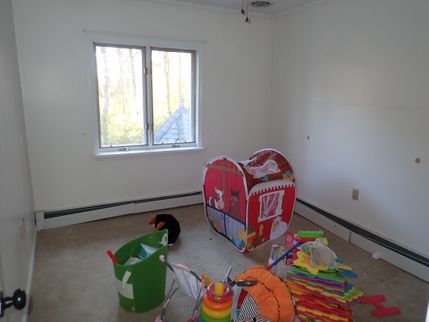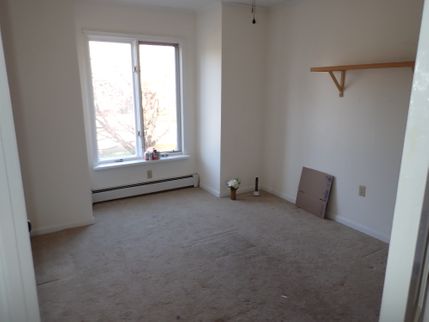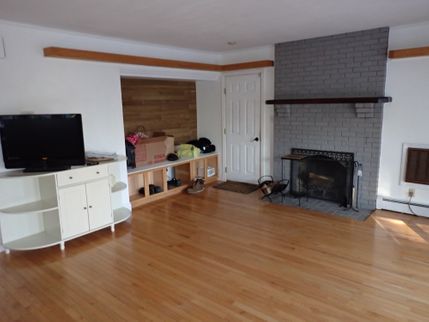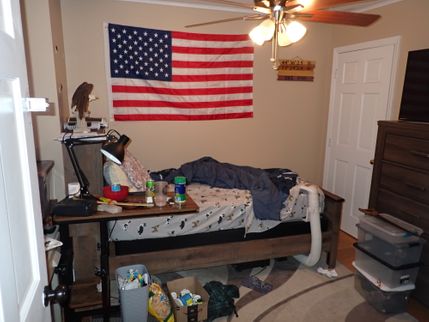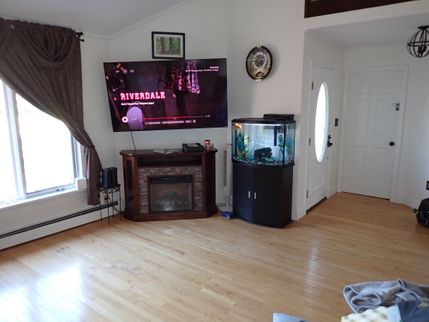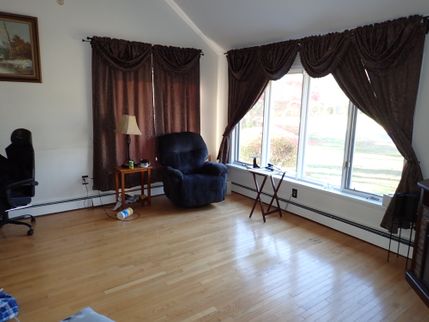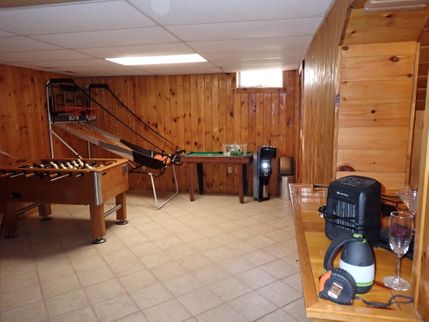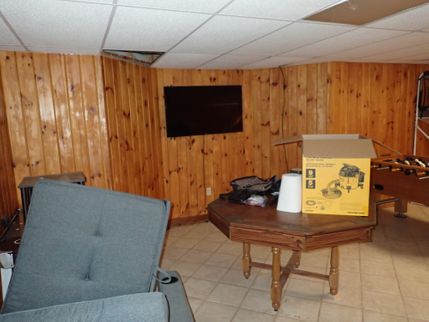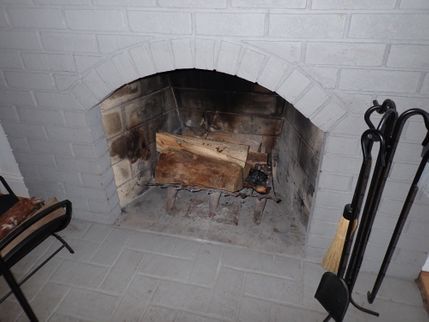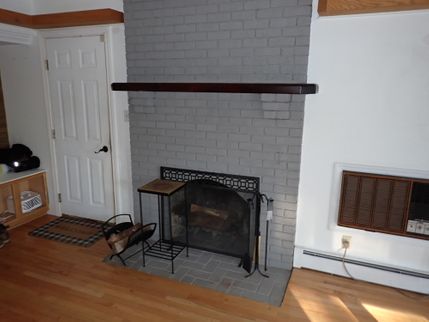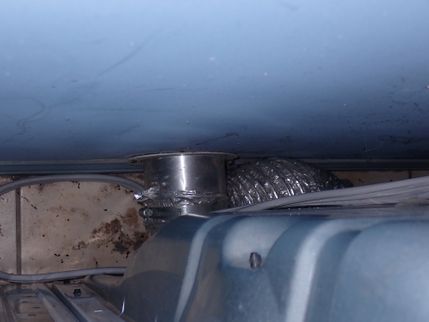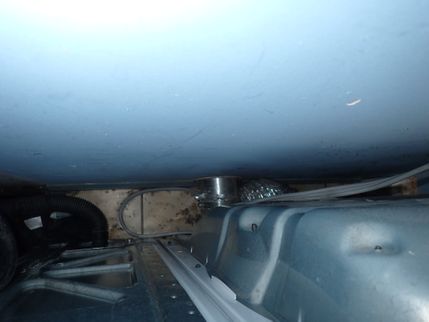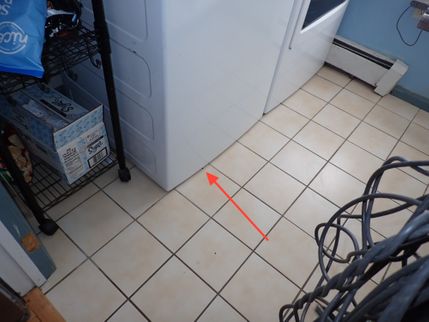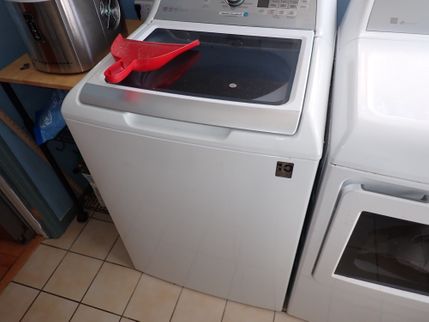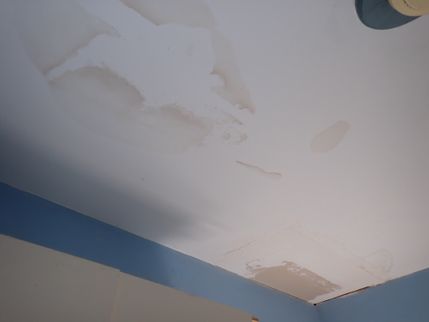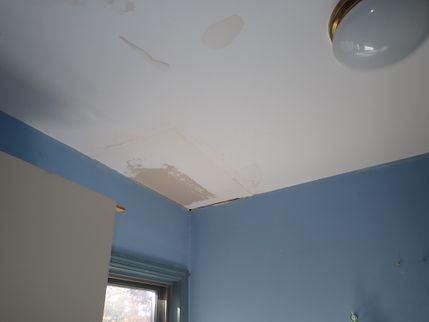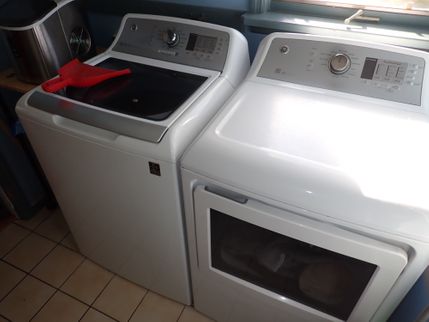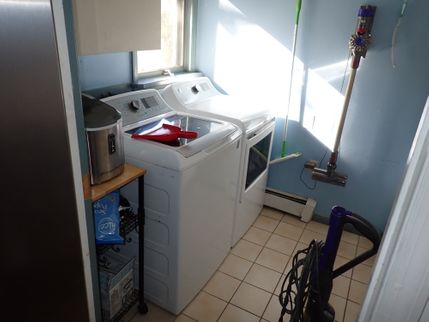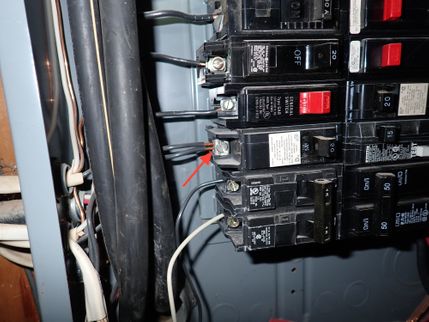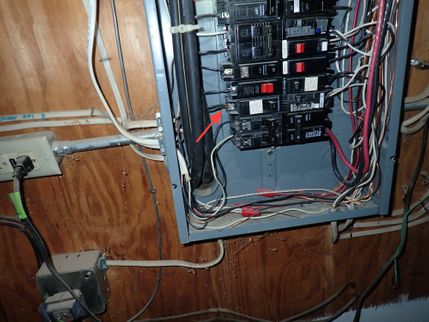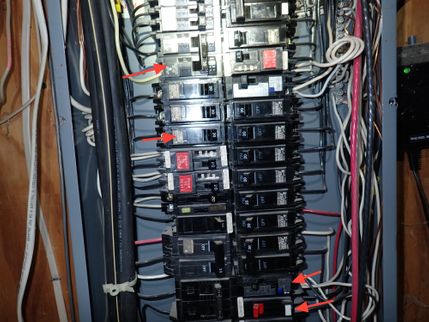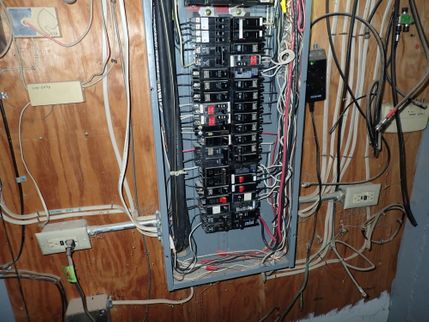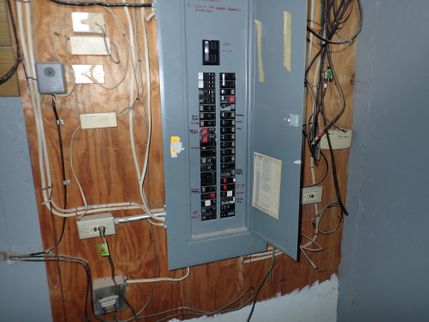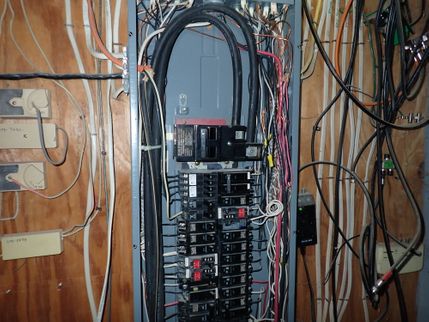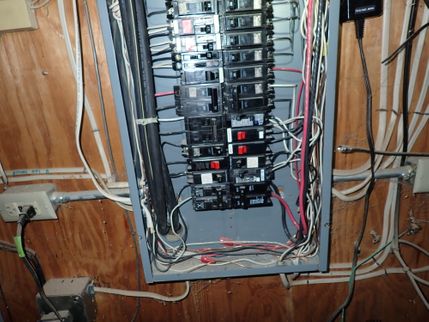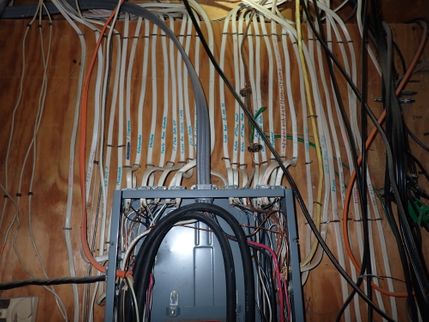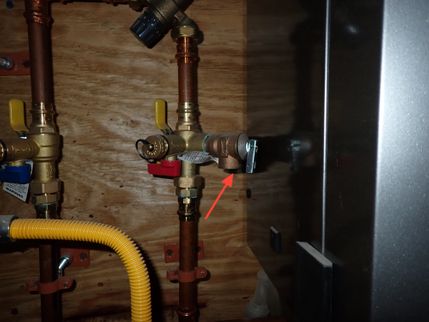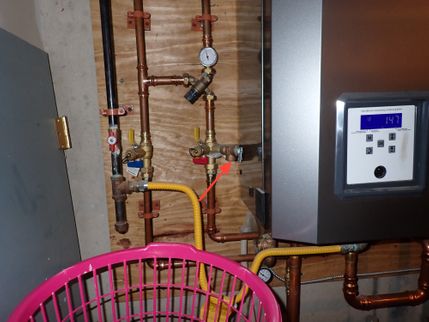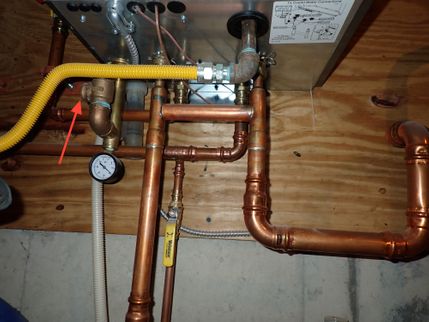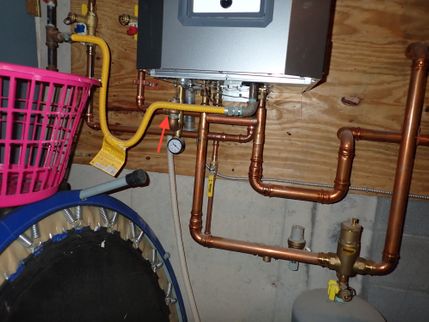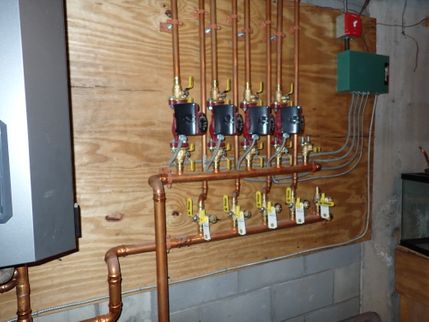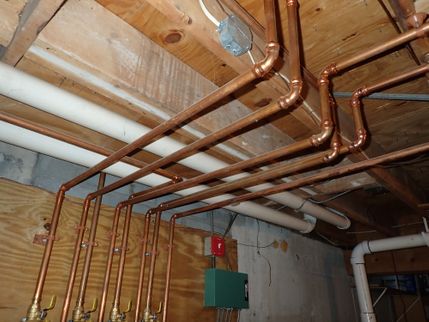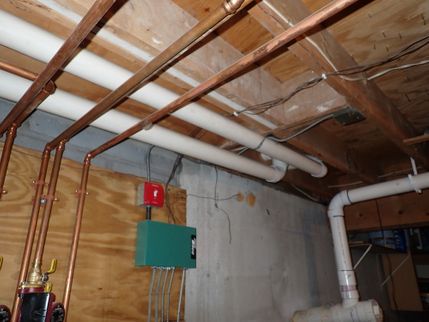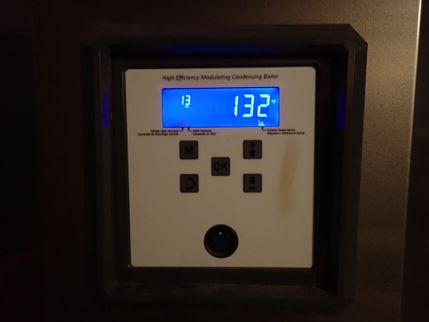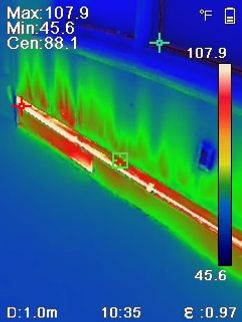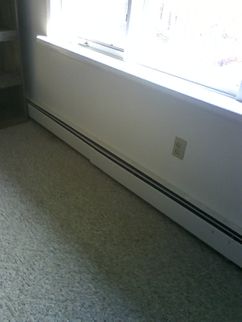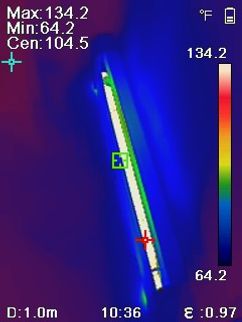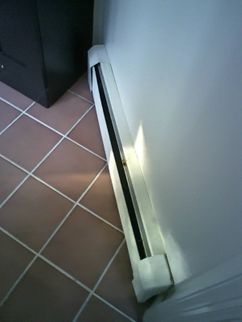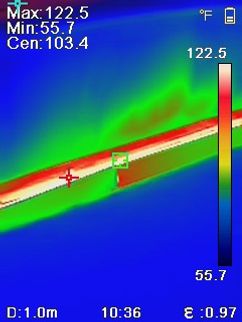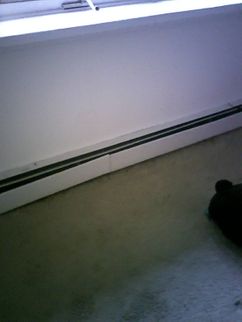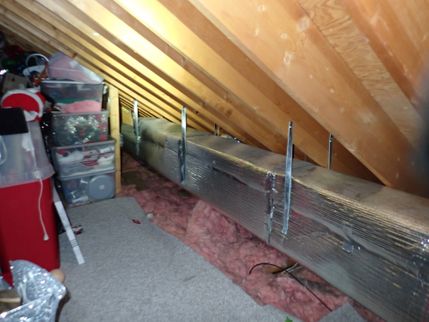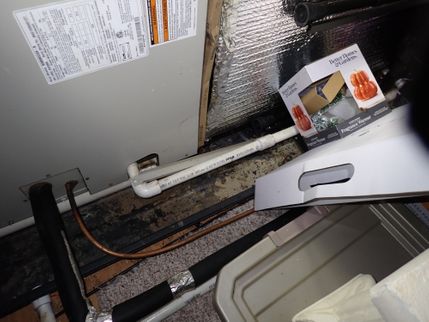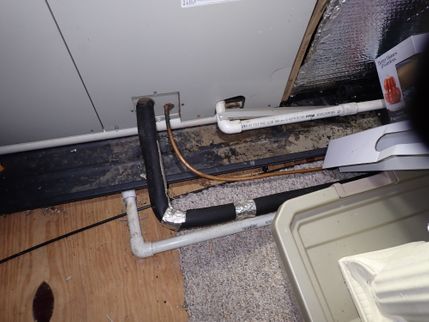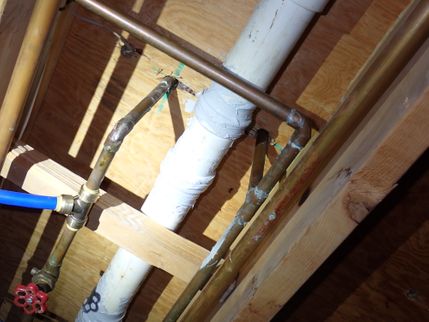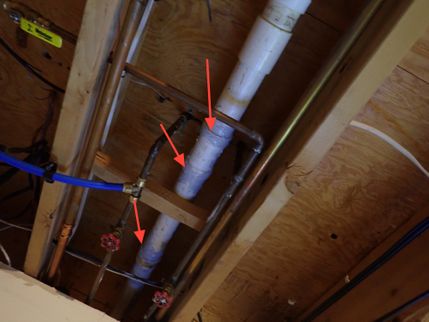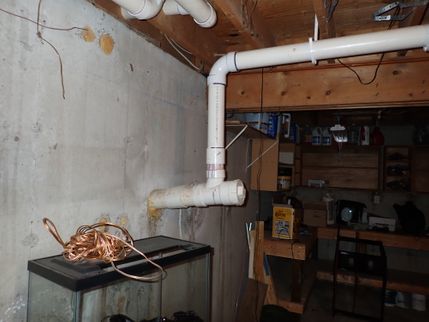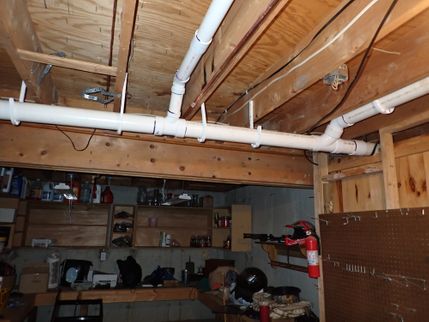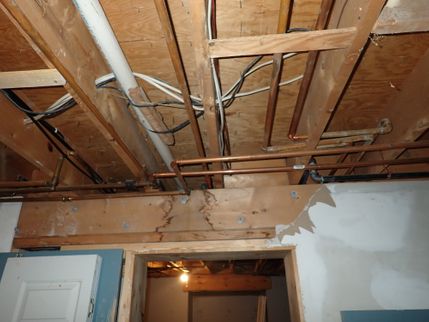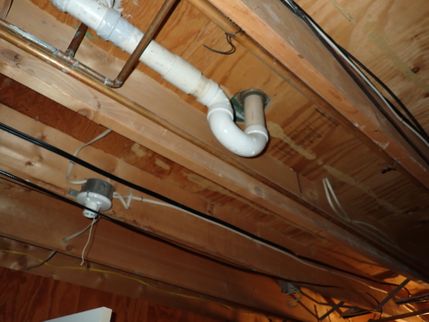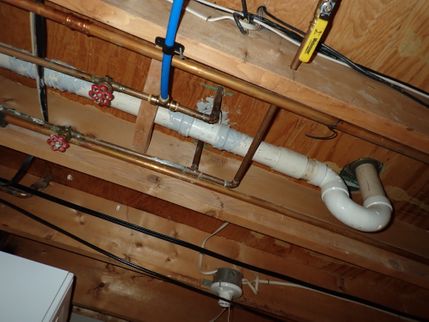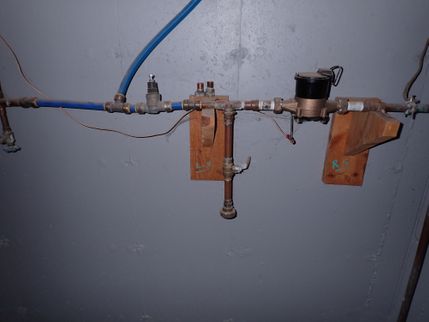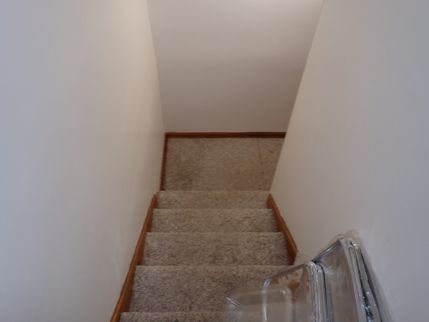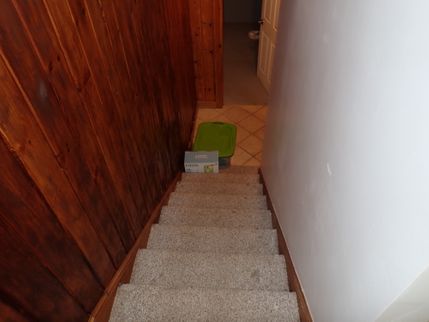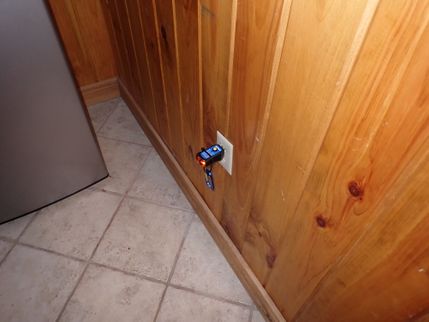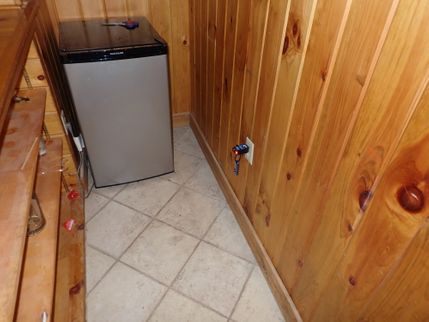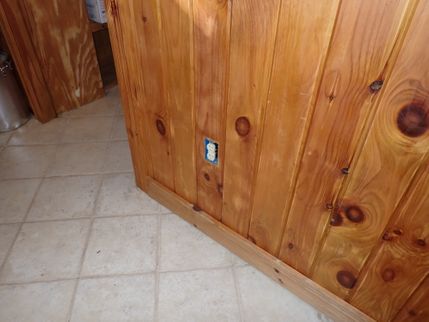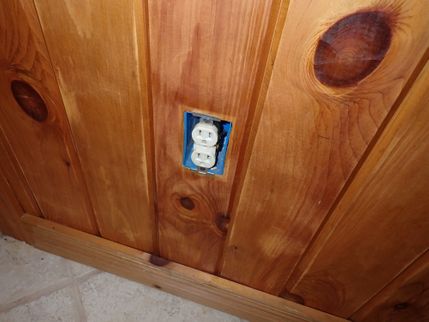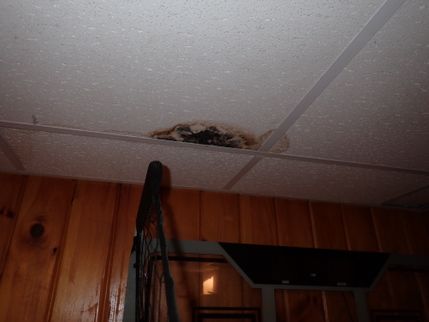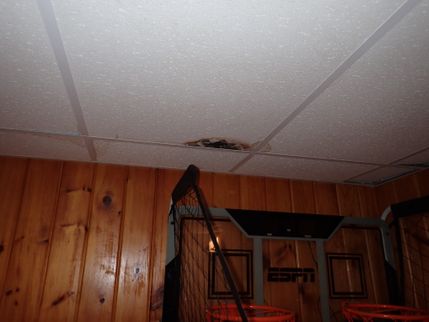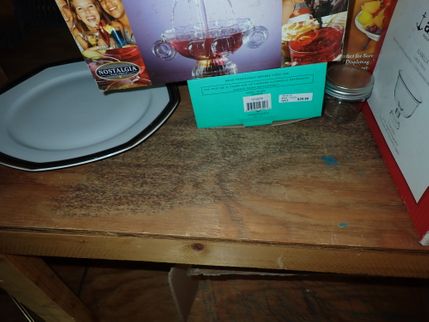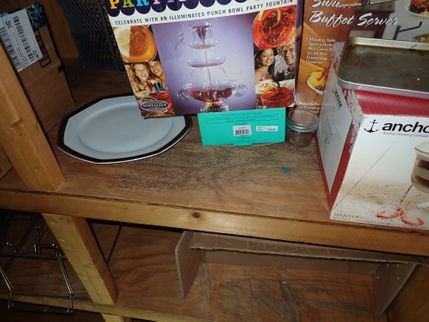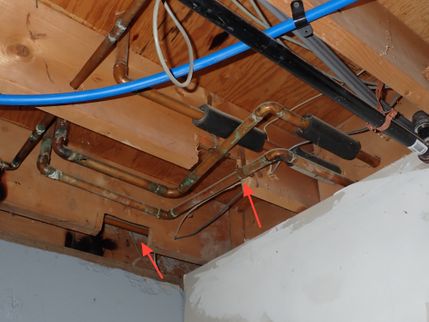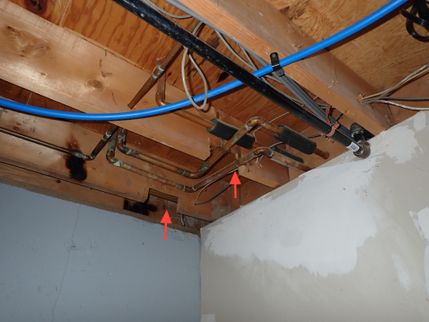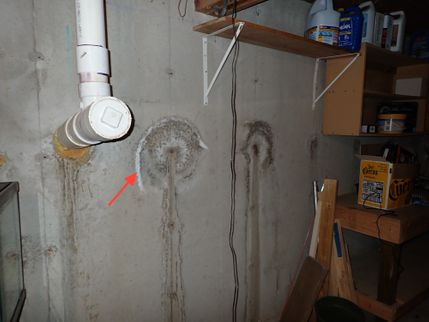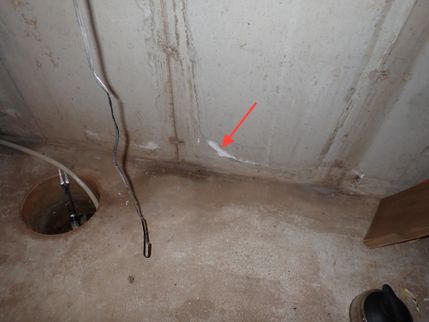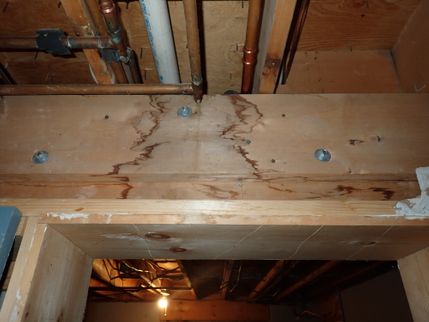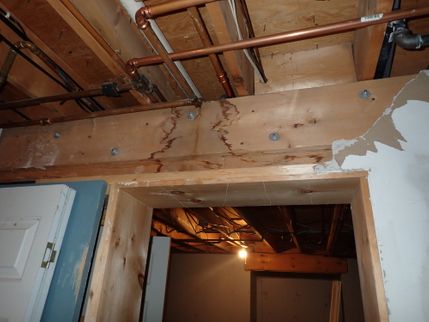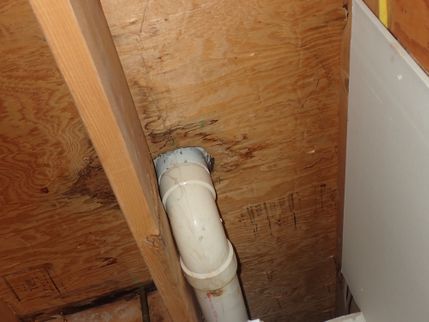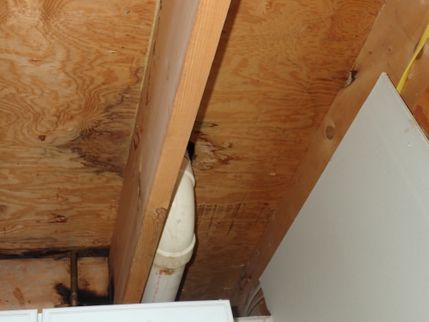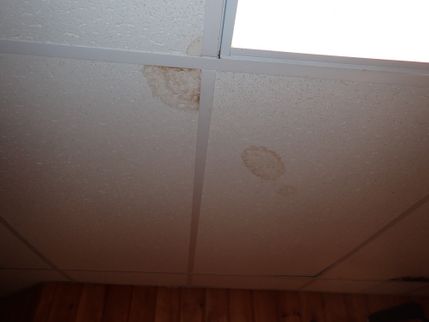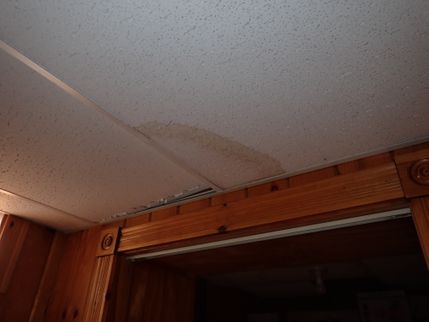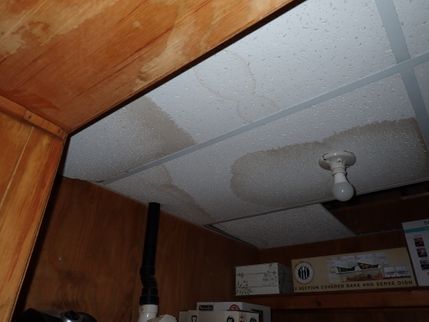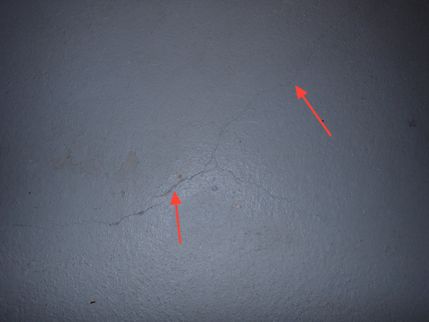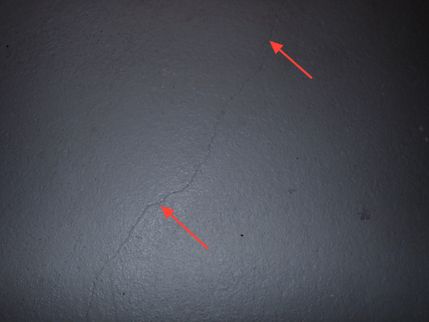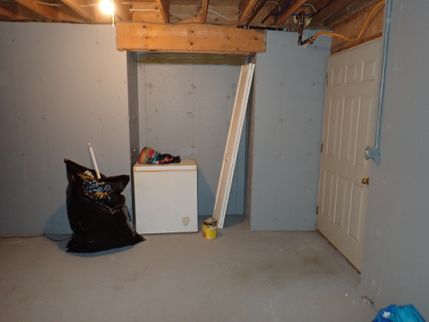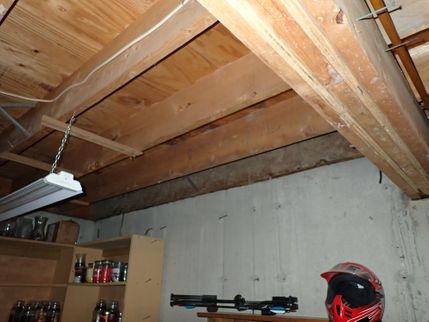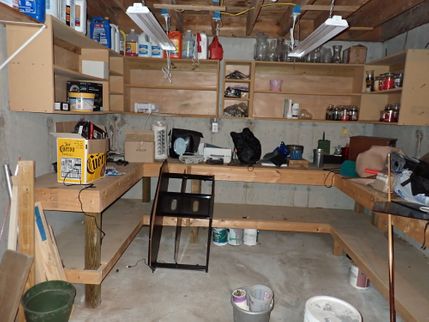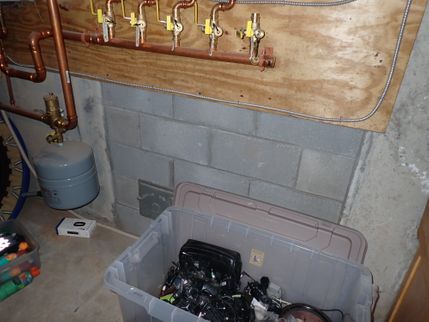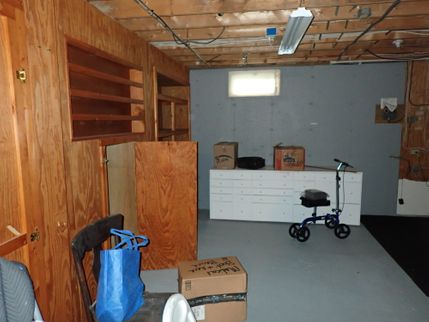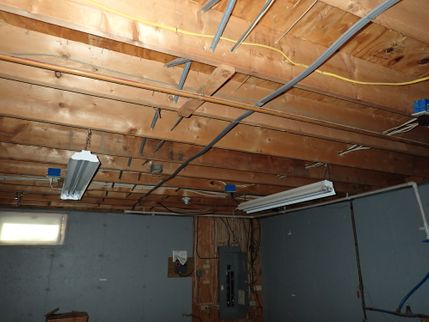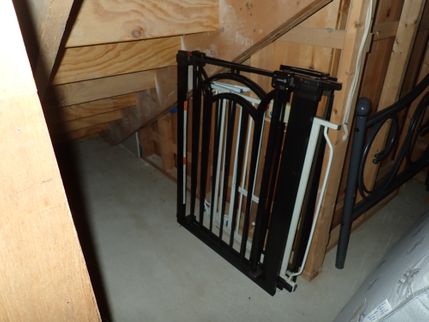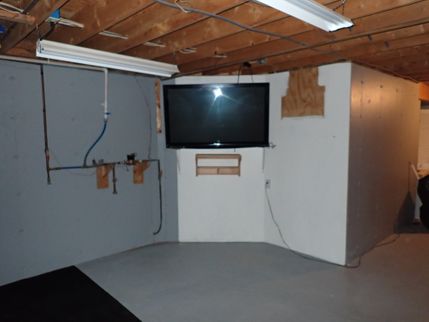The Scope and Purpose of a Home Inspection
Purchasing property involves risk
The purpose of a home inspection is to help reduce the risk associated with the purchase of a structure by providing a professional opinion about the overall condition of the structure. A home inspection is a limited visual inspection and it cannot eliminate this risk. Some homes present more risks than others. The goal of this report is to help educate you about the condition of the structure and systems contained within at the time of the inspection. This is more difficult to convey in a report and one of many reasons why it is recommended that you attend the inspection, or are present at the end of the inspection so that the findings can be conveyed in person and discussed.
A home inspection is not an insurance policy
This report does not substitute for or serve as a warranty or guarantee of any kind. Home warranties can be purchased separately from insuring firms that provide this service.
A home inspection is visual and not destructive
The descriptions and observations in this report are based on a visual inspection of the structure. We inspect the aspects of the structure that can be viewed without dismantling, damaging or disfiguring the structure and without moving furniture and interior furnishings. Areas that are concealed, hidden or inaccessible to view are not covered by this inspection. Some systems cannot be tested during this inspection as testing risks damaging the building. These procedures involve non-invasive investigation and non-destructive testing which will limit the scope of the inspection.
This is not an inspection for code compliance
As a home inspection service, Granite Peaks Home Inspections does not look at building code or code concerns. The goal of the inspection is to look at the safety, operation, and condition of the home and it's features. For concerns regarding code specifics, please contact your local municipality.
The scope of this inspection
This inspection will include the following systems: roof and ventilation, exterior walls, exterior grounds, attic, interior (kitchen, bathrooms, general), electrical, plumbing, heating, and foundation (basement or crawlspace). Other areas inspected may include: attached garages, detached garages, fireplaces, and air conditioning. Tests may also be done for radon and water quality. The evaluation will be based on limited observations that are primarily visual and non-invasive. This inspection and report are not intended to be technically exhaustive.
Your expectations
The overall goal of a home inspection is to help ensure that your expectations are appropriate with the house you are proposing to buy. The goal of Granite Peaks Home Inspections is to assist with discovery by showing and documenting observations during the home inspection. This should not be mistaken for a technically exhaustive inspection designed to uncover every defect with a building.
How to Read This Report
Getting the Information to You
This report is designed to deliver important and technical information in a way that is easy for anyone to access and understand. If you are in a hurry, you can take a quick look at our "Summary Page” and quickly get critical information for important decision making. However, we strongly recommend that you take the time to read the full Report, which includes digital photographs, captions, and descriptions containing additional information.
This report can also be printed on paper or to a PDF document.
Chapters and Sections
This report is divided into chapters that parcel the home into logical inspection components. Each chapter is broken into sections that relate to a specific system or component of the home. You can navigate between chapters with the click of a button on the left side margin.
Most sections will contain some descriptive information done in black font. Observation narrative, done in colored boxes, will be included if a system or component is found to be significantly deficient in some way or if we wish to provide helpful additional information about the system or the scope of our inspection. If a system or component of the home was deemed to be in satisfactory or serviceable condition, there may be no narrative observation comments in that section.
Observation Labels
All narrative observations are colored, numbered and labeled to help you find, refer to, and understand the severity of the observation. Observation colors and labels used in this report are:
- Safety:Items noted as defects that are identified as something that may cause bodily injury, shock hazards, fire hazards, etc.
- Evaluate:Items that may require a specialist to evaluate the existence or severity of defect noted.
- Repair:Repair and maintenance items noted during inspection. Please note that some repair items can be expensive to correct such as re-finishing hardwood floors, but are considered simply repair items due to their cosmetic nature.
- Monitor:Items that should be watched to see if correction may be needed in the future.
- Note:Refers to aside information and/or any comments elaborating on descriptions of systems in the home or limitations to the home inspection.
Summary Page
The Summary Page is designed as a bulleted overview of all the observations noted during inspection. This helpful overview is not a substitution for reading the entire inspection report. The entire report must be read to get a complete understanding of this inspection report as the Summary Page does not include photographs or photo captions.
Summary
Safeties
- EW-1 Exterior Walls:
Observed that one or more outlets were not GFCI (Ground Fault Circuit Interrupter) protected at the time of the inspection. Exterior outlets are recommended to be GFCI protected as they are more likely to be exposed to water or high levels of moisture. Water or moisture infiltration into a receptacle may present a shock or fire hazard. Recommend contacting a qualified electrician to repair as necessary.
- EG-1 Exterior Grounds:
The walkway was observed to have variations in height, cracks, and/or depressions at the time of the inspection. This may present a trip hazard to individuals using the walkway. Recommend contacting a qualified contractor to repair as necessary.
- EG-5 Exterior Grounds:
Observed that the stair handrail was not graspable at the time of the inspection. Handrails are typically considered graspable if the flat surface is less than or equal to 2 1/4". This may present a safety or fall hazard to occupants using the stairs, especially small children. Recommend contacting a qualified contractor to repair as necessary.
- EG-9 Exterior Grounds:
Observed that the stair handrail was not graspable at the time of the inspection. Handrails are typically considered graspable if the flat surface is less than or equal to 2 1/4". This may present a safety or fall hazard to occupants using the stairs, especially small children. Recommend contacting a qualified contractor to repair as necessary.
- AG-1 Attached Garage:
Observed that the doors separating the garage from the interior of the home and basement were not self-closing at the time of the inspection. This may be a safety issue, as self-closing doors help to keep fumes from the garage out of the interior of the home. They also help to prevent any fire in the garage from spreading to the rest of the home. Recommend contacting a qualified contractor to repair as necessary.
- AG-2 Attached Garage:
One or more outlets were observed to not be GFCI (Ground Fault Circuit Interrupter) protected at the time of the inspection. Outlets in the garage are typically recommended to be GFCI protected as they are more prone to be exposed to water or high levels of moisture. Moisture infiltration into an outlet may present a shock and/or fire hazard. Recommend contacting a qualified electrician to repair as necessary.
- UB-1 Upstairs Bathroom:
One or more outlets within six feet of a water source were found to not be GFCI (Ground Fault Circuit Interrupter) protected. This may present a shock and/or fire hazard in the event water were to enter the outlet. Recommend contacting a qualified electrician to repair as necessary.
- EB-1 Ensuite Bathroom:
One or more outlets within six feet of a water source were found to not be GFCI (Ground Fault Circuit Interrupter) protected. This may present a shock and/or fire hazard in the event water were to enter the outlet. Recommend contacting a qualified electrician to repair as necessary.
- EB-2 Ensuite Bathroom:
One or more electrical boxes, outlets, and/or switches were observed to be missing cover plates at the time of the inspection. This may present a shock hazard to individuals, especially children, who may come into contact with live wires connected to the outlet. Recommend contacting a qualified electrician to repair as necessary.
- GI-1 General Interior:
No carbon monoxide detectors were observed at the time of the inspection. This may present a hazard in the event of elevated levels of carbon monoxide in the building. Recommend installing carbon monoxide detectors on each floor. Contact a qualified contractor to do so if necessary. No image available.
- GI-2 General Interior:
The handrail on the stairs was observed to not be continuous for the entire length of the staircase at the time of the inspection. This may present a safety hazard to individuals using the staircase, especially small children or those with limited mobility. Recommend contacting a qualified contractor to repair as necessary.
- GI-3 General Interior:
Observed one or more damaged baseboard heaters at the time of the inspection. Damaged heaters may present a safety hazard as the metal covering may be sharp, but missing or damaged covers may allow access to hot internal components by children, pets, or other individuals in the home. Recommend contacting a qualified contractor to repair as necessary.
- GI-4 General Interior:
One or more electrical boxes, outlets, and/or switches were observed to be missing cover plates at the time of the inspection. This may present a shock hazard to individuals, especially children, who may come into contact with live wires connected to the outlet. Recommend contacting a qualified electrician to repair as necessary.
- L-1 Laundry:
A flexible foil dryer vent was observed at the time of the inspection. This may present a fire hazard since flexible foil vents are prone to kink and may allow for the buildup of lint, which can be flammable. Recommend contacting a qualified contractor to repair as necessary.
- ES-1 Electrical System:
Observed one or more double-tapped breakers at the time of the inspection. Double-tapped breakers are prone to coming loose and may cause arcing/sparking inside the panel, which may present a fire hazard. Recommend contacting a qualified electrician to repair as necessary.
- ES-2 Electrical System:
Observed one or more mismatched breakers in the electrical panel at the time of the inspection. Many panel and breaker manufacturers have different designs and use of improper breakers may prevent proper connection and seating in the panel. Improper seating and/or connection may present a fire and/or shock hazard. Recommend contacting a qualified electrician to evaluate and repair as necessary.
- DWH-1 Domestic Water Heater:
No TPRV (Temperature/Pressure Relief Valve) extension was observed on the unit at the time of the inspection. This may present a burn/scald hazard in the event of a system or component malfunction as hot water would be released from the system near chest height of an individual. Recommend contacting a qualified contractor to repair as necessary.
- HS-1 Heating System:
No TPRV (Temperature/Pressure Relief Valve) extension was observed on the unit at the time of the inspection. This may present a burn/scald hazard in the event of a system or component malfunction as hot water would be released from the system near chest height of an individual. Recommend contacting a qualified contractor to repair as necessary.
- B-1 Basement:
No handrail was observed on the stairs at the time of the inspection. This may present a safety issue, especially to small children and those with limited mobility. Recommend contacting a qualified contractor to repair as necessary.
- B-2 Basement:
One or more outlets were observed to not be GFCI (Ground Fault Circuit Interrupter) protected at the time of the inspection. Outlets in the basement are typically recommended to be GFCI protected as they are more prone to be exposed to water or high levels of moisture. Moisture infiltration into an outlet may present a shock and/or fire hazard. Recommend contacting a qualified electrician to repair as necessary.
- B-3 Basement:
Observed one or more electrical outlet boxes/switches and/or junction boxes with no covers at the time of the inspection. This may present a shock hazard to individuals using the outlets/switches. Recommend contacting a qualified electrician to repair as necessary.
Evaluates
- AG-3 Attached Garage:
The sink in the garage appeared to discharge to the perimeter drain of the home at the time of the inspection. This is not typically recommended, as it may lead to chemicals and/or contaminants being poured down the drain and introduced into the groundwater and area around the home. Recommend contacting a qualified contractor evaluate the drainage and repair as necessary.
- A-1 Attic:
Evidence of bees/wasps/insects was found in the attic at the time of the inspection. Insects may be destructive and a nuisance, and may also find there way to the interior of the home. Recommend contacting a qualified pest contractor to evaluate and remediate as necessary.
- K-1 Kitchen:
One or more windows were observed to be difficult to operate at the time of the inspection. This may be an indication of faulty locks or handles, improper installation of the window, and/or that the window is older and may be sticking during operation. Recommend contacting a qualified contractor to evaluate and repair as necessary. No image available.
- GI-5 General Interior:
One or more windows were observed to be difficult to operate or would not open at the time of the inspection. This may be an indication of faulty locks or handles, improper installation of the window, and/or that the window is older and may be sticking during operation. Recommend contacting a qualified contractor to evaluate and repair as necessary.
- GI-6 General Interior:
One or more sunroom doors were observed to be difficult to operate or latch properly at the time of the inspection. Difficult/improper operation of doors may be an indication that the units are older, or may be an indication that the units were installed incorrectly. Recommend contacting a qualified contractor to evaluate and repair/replace as necessary.
- GI-7 General Interior:
One or more light switches was observed to not function at the time of the inspection. This may be due to a burned-out bulb, improper wiring of a fixture, or improper wiring of the switch. Recommend contacting a qualified contractor to evaluate and repair as necessary.
Repairs
- RV-1 Roof and Ventilation:
Observed shingles with deterioration at the time of the inspection. Deteriorated shingles may allow for moisture intrusion into the roof structure below. Recommend contacting a qualified contractor to repair as necessary.
- RV-2 Roof and Ventilation:
Observed exposed nails on the roof of the home at the time of the inspection. Exposed nails may allow water to penetrate the roof covering, which may lead to deterioration of the roof structure below. Recommend contacting a qualified contractor to repair as necessary.
- RV-3 Roof and Ventilation:
Observed moss/algae growth on the roof covering of the home at the time of the inspection. Moss and algae retain moisture against the covering of the roof which may allow for moisture penetration to the roof sheathing and structure underneath. Recommend contacting a qualified contractor to repair as necessary.
- RV-4 Roof and Ventilation:
Observed algae and/or mold growth on the soffit/fascia and gutters area of the home at the time of the inspection. Algae/mold growth may retain moisture against the soffit material, which may lead to accelerated deterioration of wall covering or moisture penetration into the structure of the home. Recommend contacting a qualified contractor to repair as necessary.
- RV-5 Roof and Ventilation:
No gutters were observed on the front of the home at the time of the inspection. This may allow for water runoff from the roof to land and pool next to the foundation of the home. Recommend contacting a qualified contractor to repair as necessary.
- RV-6 Roof and Ventilation:
Observed one or more gutter downspouts discharging onto a lower roof section at the time of the inspection. Discharging water directly onto the roof covering from a gutter can allow for accelerated deterioration of the roof covering material in that area. Recommend contacting a qualified contractor to repair as necessary.
- RV-7 Roof and Ventilation:
Observed gutters with no downspouts and/or downspouts with short or no extensions. This may allow for water to pool next to the foundation of the home. Gutter extensions are typically recommended to terminate six feet from the home. Recommend contacting a qualified contractor to repair as necessary.
- EW-2 Exterior Walls:
Exposed framing, sheathing, and/or insulation was observed in one or more areas of the home at the time of the inspection. These materials are not typically suited for exterior exposure as they may not provide a sufficient barrier for moisture, weather, and/or insects. If these materials are exposed to weather, it may allow for accelerated deterioration of components and have a negative effect on the efficiency of the home. Recommend contacting a qualified contractor to repair as necessary.
- EW-3 Exterior Walls:
Observed gaps, holes, and/or cracks in siding in one or more locations around the home. This may allow for water or insect intrusion to the structure behind the siding. Recommend contacting a qualified contractor to repair as necessary.
- EW-4 Exterior Walls:
Observed deterioration of one or more window and/or door frames at the time of the inspection. Deterioration of window/door frames may allow for water and/or insect intrusion into the structure. Recommend contacting a qualified contractor to repair as necessary.
- EW-5 Exterior Walls:
Observed algae and/or mold growth on the wall covering of the home at the time of the inspection. Algae/mold growth may retain moisture against the wall covering, which may lead to accelerated deterioration of wall covering or moisture penetration into the structure of the home. Recommend contacting a qualified contractor to repair as necessary.
- UB-2 Upstairs Bathroom:
Observed that the toilet was loose at the time of the inspection. This may allow for the toilet to leak and may also allow for the back flow of sewer gases into the home. Recommend contacting a qualified contractor to repair as necessary. No image available.
- UB-3 Upstairs Bathroom:
Observed cracked and/or deteriorated caulking at the time of the inspection. This may allow for water infiltration into the structure/subfloor of the home. Recommend contacting a qualified contractor to repair as necessary.
- EB-3 Ensuite Bathroom:
Observed cracked and/or deteriorated caulking at the time of the inspection. This may allow for water infiltration into the structure/subfloor of the home. Recommend contacting a qualified contractor to repair as necessary.
- EB-4 Ensuite Bathroom:
A flexible drain line was observed under the sink at the time of the inspection. While typically approved for use, flexible drain lines may be prone to clogging and backing up flow through the sink. Recommend contacting a qualified contractor to repair as necessary.
- DB-1 Downstairs Bathroom:
Observed missing or lack of caulking at the time of the inspection. This may allow for water infiltration into the structure/subfloor of the home. Recommend contacting a qualified contractor to repair as necessary.
- K-2 Kitchen:
Evidence of rodents was observed at the time of the inspection. Evidence of rodents may include one or more of the following: the presence of traps, nests, feces, remains of dead rodents, etc. Rodents may be destructive and may carry disease. Recommend contacting a qualified pest control contractor to evaluate and remediate as necessary. No image available.
- GI-8 General Interior:
One or more windows and/or doors was observed to have a potential compromised seal between panes at the time of the inspection. This may have a negative effect on the efficiency of the window. Recommend contacting a qualified contractor to repair as necessary.
- GI-9 General Interior:
Observed what appeared to be a previous repair in the ceiling area of the kitchen/dining/living space at the time of the inspection. The area in question was observed to be underneath the ensuite bathroom on the second floor. Repair may be an indication of a previous leak and water damage. The area did not appear wet at the time of inspection. Recommend monitoring the area for any deterioration, wetness, and/or moisture stains, as this may be an indication of an active leak. Contact a qualified contractor to evaluate and repair as necessary.
- L-2 Laundry:
No overflow pan was observed under the washing machine at the time of the inspection. Drain pans are recommended under washing machines to help contain any water that may be spilled in the event of a machine failure or leak. Washer pans will help to prevent leaked water from spreading or infiltrating into the subfloor or materials below the laundry room. Recommend contacting a qualified contractor to repair as necessary.
- B-4 Basement:
A mold-like substance was observed in the basement at the time of the inspection. The area covered appeared to be less than 10 square feet. The presence of a mold-like substance may be an indication of high levels of moisture in the basement. Recommend contacting a qualified contractor to remediate as necessary.
- B-5 Basement:
Observed modification(s) to one or more floor joists at the time of the inspection. Improper modification to floor joists may weaken the structure, allowing the floors to bow and sag, and increase stress on other components of the structure. Recommend contacting a qualified contractor to repair as necessary.
- B-6 Basement:
Efflorescence was observed on one or more areas of the foundation wall at the time of the inspection. Efflorescence may be an indication of moisture intrusion through the foundation walls. Moisture infiltration may lead to standing water, deterioration of components, and/or allow for the growth of mold. Recommend contacting a qualified contractor to repair as necessary.
Monitors
- EG-2 Exterior Grounds:
Observed cracks and/or depressions in the driveway at the time of the inspection. Cracks and depressions are common for driveways as they settle and see heavy use. Cracks may allow water infiltration, which can expand during the freeze/thaw cycle experienced in this climate, and depressions may allow for water accumulation that can freeze and turn to ice, presenting a fall hazard. Recommend monitoring areas for any growth or expansion of cracks/depressions and contact a qualified contractor to repair if necessary.
- EG-6 Exterior Grounds:
One or more areas of the porch were observed to be weathered at the time of the inspection. Wood components will weather with age, and without proper care, may start to deteriorate at an accelerated rate. Recommend monitoring these areas for any signs of deterioration or breakdown of materials, as this may allow for moisture and/or insect intrusion into the structure. Contact a qualified contractor to evaluate and repair as necessary.
- AG-4 Attached Garage:
Cracks and/or spalling was observed in the floor at the time of the inspection. Cracks/spalling may be related to settling or curing of the concrete after construction, or from continued use of driving/parking vehicles on over time. Recommend monitoring cracks for any growth/expansion, as that may be an indication of continued movement of the garage structure or floor. Contact a qualified contractor to repair as necessary.
- AG-5 Attached Garage:
One or more cracks were observed in the garage foundation at the time of the inspection. Cracking may be an indication of settlement of the structure after it was built. Recommend monitoring the area for any expansion of cracks, spalling, or new cracks, as this may be an indication of continued movement. Contact a qualified contractor to repair as necessary.
- A-2 Attic:
Water staining was observed in one or more areas of the attic at the time of the inspection. Stains appeared dry. Recommend monitoring stains and stained areas for any continued expansion or any place that may actively be wet, as this may be an indication of an active leak. Recommend contacting a qualified contractor to evaluate and repair if necessary.
- K-3 Kitchen:
Observed what appeared to be moisture stains under the sink at the time of the inspection. This may be an indication of a past or active leak. Recommend monitoring area for any increase in stains or wet areas, as this may indicate the leak is active. Contact a qualified contractor to repair as necessary.
- L-3 Laundry:
Moisture staining was observed in one or more locations throughout the laundry area at the time of the inspection. The stains appeared to be dry. Recommend monitoring stains for any wetness or expansion, as this may be an indication of an active leak. Contact a qualified contractor to evaluate and repair as necessary.
- PS-1 Plumbing System:
Observed what appeared to be the use of improper glue/sealant and/or a previous repair on the plumbing at the time of the inspection. This may be an indication of a previous leak. Recommend monitoring area for any wetness, dripping, or staining, as this may be an indication that the leak is still active. Use of improper glue/sealant may allow for leaks to reappear in the future. Contact a qualified contractor to evaluate and repair if necessary.
- B-7 Basement:
Water staining and/or deterioration was observed in one or more areas of the ceiling structure of the basement/flooring structure above. This may be an indication of a past or active leaks. The area appeared dry at the time of the inspection. Recommend monitoring the area for any wetness, continued deterioration, or expansion of stains, as this may indicate leaks are active. Contact a qualified contractor to evaluate and repair as necessary.
- B-8 Basement:
Moisture staining was observed in one or more locations on drop ceiling tiles at the time of the inspection. Stains appeared dry at the time. Recommend monitoring stained areas for any growth/expansion of stains or for active wetness, as this may be an indication of an active leak. Contact a qualified contractor to evaluate and repair as necessary.
- B-9 Basement:
Cracks were observed in one or more locations of the basement floor at the time of the inspection. Cracks appear to be cosmetic and may be due to curing of the concrete after construction. Recommend monitoring cracks for any growth, expansion, or deflection, as this may be an indication of other foundation or structural issues. Contact a qualified contractor to evaluate and repair as necessary.
Notes
- RV-8 Roof and Ventilation:
Pictures represent the condition of the roof at the time of the inspection.
- EW-6 Exterior Walls:
Pictures represent the condition of the exterior walls at the time of the inspection.
- EG-3 Exterior Grounds:
Pictures represent the condition of the exterior grounds and foundation walls at the time of the inspection.
- EG-4 Exterior Grounds:
Pictures represent the condition of the patio at the time of the inspection.
- EG-7 Exterior Grounds:
Visibility under the structure(s) was limited or non-existent, making a full evaluation of the area impossible at the time of the inspection.
- EG-8 Exterior Grounds:
Pictures reflect the condition of the porch at the time of the inspection.
- EG-10 Exterior Grounds:
Visibility under the structure was limited or non-existent, making a full evaluation of the area impossible at the time of the inspection.
- EG-11 Exterior Grounds:
Pictures represent the condition of the deck(s) at the time of the inspection.
- EG-12 Exterior Grounds:
Pictures represent the condition of the outdoor air conditioning unit at the time of the inspection.
- AG-6 Attached Garage:
Vehicle(s) and/or stored items were present in the garage at the time of the inspection, limiting the scope of what could be tested and observed. Pictures represent the condition of the garage at the time of the inspection.
- A-3 Attic:
Stored items were present in the attic, limiting what could be observed at the time of the inspection. Pictures represent the condition of the attic as observed.
- UB-4 Upstairs Bathroom:
Picture(s) represent the condition of the bathroom at the time of the inspection.
- EB-5 Ensuite Bathroom:
Picture(s) represent the condition of the bathroom at the time of the inspection.
- DB-2 Downstairs Bathroom:
Picture(s) represent the condition of the bathroom at the time of the inspection.
- K-4 Kitchen:
One or more kitchen appliances were not tested at the time of the inspection.
- K-5 Kitchen:
Pictures represent the condition of the kitchen at the time of the inspection.
- GI-10 General Interior:
The presence of personal items prevented full observation and testing of several components, including but not limited to: heaters, electrical outlets, windows, and doors. Pictures represent the condition of the general interior at the time of the inspection.
- F-1 Fireplace:
Recommend a level 2 inspection by a qualified chimney sweep/fireplace contractor before use. Pictures represent the condition of the fireplace/stove at the time of the inspection.
- L-4 Laundry:
The washer and/or dryer were not tested at the time of the inspection.
- L-5 Laundry:
Pictures represent the condition of the laundry area at the time of the inspection.
- ES-3 Electrical System:
Pictures represent the condition of the electrical system at the time of the inspection.
- DWH-2 Domestic Water Heater:
Hot water was observed to be provided by a combination heat and hot water unit. See the Heating System section for more details and images.
- HS-2 Heating System:
The unit was observed to be a combination unit providing both heat and domestic hot water.
- HS-3 Heating System:
Pictures represent the condition of the heating system at the time of the inspection.
- AC-1 Air Conditioner:
The air conditioning system was not tested at the time of the inspection due to the ambient air temperature being less than 65F within 24 hours of conducting the inspection.
- AC-2 Air Conditioner:
Pictures represent the condition of the air conditioning system at the time of the inspection.
- PS-2 Plumbing System:
Much of the plumbing was not visible at the time of the inspection due to the finished basement condition and style of the home. Pictures represent the condition of the visible plumbing as observed.
- B-10 Basement:
The basement was observed to be partially finished at the time of the inspection. This prevented a full inspection of foundation walls and utilities normally visible in a basement. See the General Interior section of the report for details on finished space.
- B-11 Basement:
Stored items were observed in the basement at the time of the inspection. This limited the ability to inspect all areas of the basement and any utilities blocked or covered by stored items. Pictures represent the condition of the basement as observed.
- GR-1 General Remarks:
Recommend installing all new locks throughout the home to prevent access by anyone that may have been given a key by the previous owner.
- GR-2 General Remarks:
Recommend installing new smoke detectors and carbon monoxide detectors when moving into a new home to be sure they are all in correct working order.
Full Report
General Overview
Area Overview: Quiet Residential Neighborhood
Start Time: 9:00 am
End Time: 1:30 pm
Present at Inspection: Buyer, Owner
Occupancy: Occupied
Age of House: Between 30 and 40 years
Type of House: 1 family house
Weather Condition: Clear
Temperature: Cool
Ground Condition: Dry
Foundation: Basement
Excluded From Inspection: Pool, Outbuildings, Septic System, Shed
House Number: On mailbox
Roof and Ventilation
Roof Inspection Method: From Eaves, From Ground
Roof Type: Gable
Roof Covering: Architectural Shingle
Roof Approximate Age: Midlife
Roof Penetrations: Vent Pipe, Chimney
Gutter Material: Aluminum
Gutter Extensions: Noted but not a Good Length
Chimney Appears to be Built: Exterior, Interior
Spark Arrestor/Rain Cap: Noted
Chimney made of: Stone
Chimney Flue: Not Visible
Chimney Crown: Noted
Gable Overhang: About 12 inches
Eave Overhang: About 12 inches
Roof Ventilation: Soffit Vents, Ridge Vent, Gable Vents
Observed moss/algae growth on the roof covering of the home at the time of the inspection. Moss and algae retain moisture against the covering of the roof which may allow for moisture penetration to the roof sheathing and structure underneath. Recommend contacting a qualified contractor to repair as necessary.
Observed algae and/or mold growth on the soffit/fascia and gutters area of the home at the time of the inspection. Algae/mold growth may retain moisture against the soffit material, which may lead to accelerated deterioration of wall covering or moisture penetration into the structure of the home. Recommend contacting a qualified contractor to repair as necessary.
Observed one or more gutter downspouts discharging onto a lower roof section at the time of the inspection. Discharging water directly onto the roof covering from a gutter can allow for accelerated deterioration of the roof covering material in that area. Recommend contacting a qualified contractor to repair as necessary.
Observed gutters with no downspouts and/or downspouts with short or no extensions. This may allow for water to pool next to the foundation of the home. Gutter extensions are typically recommended to terminate six feet from the home. Recommend contacting a qualified contractor to repair as necessary.
Exterior Walls
Wall Structure: Wood Frame
Wall Covering Material: Vinyl
Condition of Wall: Cracks/Holes/Gaps, Acceptable
Trim Material: Vinyl
Condition of Trim: Acceptable
Door Material: Metal
Windows: Vinyl Windows
Electrical Service Supply: Underground
Meter Amperage: 200 Amp
Voltage: 120/240 Volts
Meter Caulking Condition: Acceptable
High Efficiency Piping: Properly Oriented
Observed that one or more outlets were not GFCI (Ground Fault Circuit Interrupter) protected at the time of the inspection. Exterior outlets are recommended to be GFCI protected as they are more likely to be exposed to water or high levels of moisture. Water or moisture infiltration into a receptacle may present a shock or fire hazard. Recommend contacting a qualified electrician to repair as necessary.
Exposed framing, sheathing, and/or insulation was observed in one or more areas of the home at the time of the inspection. These materials are not typically suited for exterior exposure as they may not provide a sufficient barrier for moisture, weather, and/or insects. If these materials are exposed to weather, it may allow for accelerated deterioration of components and have a negative effect on the efficiency of the home. Recommend contacting a qualified contractor to repair as necessary.
Observed algae and/or mold growth on the wall covering of the home at the time of the inspection. Algae/mold growth may retain moisture against the wall covering, which may lead to accelerated deterioration of wall covering or moisture penetration into the structure of the home. Recommend contacting a qualified contractor to repair as necessary.
Exterior Grounds
General Information
Exterior of Foundation Walls: Concrete
Exterior Foundation Exposure: 1 Foot to 2 Feet
Exterior Foundation Condition: Acceptable
Grading Within 6 Feet of House: About Level, Slopes Away
Grading Beyond 6 Feet of House: About Level, Slopes Away
Driveway: Asphalt
Driveway Condition: Small Cracks
Walkway to Front Entry: Pavers
Walkway Condition: Depressions
Patio/Deck/Porch?: Patio, Deck, Porch
Observed cracks and/or depressions in the driveway at the time of the inspection. Cracks and depressions are common for driveways as they settle and see heavy use. Cracks may allow water infiltration, which can expand during the freeze/thaw cycle experienced in this climate, and depressions may allow for water accumulation that can freeze and turn to ice, presenting a fall hazard. Recommend monitoring areas for any growth or expansion of cracks/depressions and contact a qualified contractor to repair if necessary.
Patio
Location: Back of House
Patio Material: Wood
Patio Condition: Acceptable
Porch
Location: Front of House
Porch Roof: Extension of Main Roof
Porch Roof Covering: Architectural Shingles
Porch Material: Wood
Porch Surface Condition: Acceptable
Porch Steps to Grade: Three or More
Porch Step Condition: Acceptable
Visibility Under Porch: Less than 1 foot and no view
Guardrail Condition: Acceptable
Handrail Condition: Acceptable
Observed that the stair handrail was not graspable at the time of the inspection. Handrails are typically considered graspable if the flat surface is less than or equal to 2 1/4". This may present a safety or fall hazard to occupants using the stairs, especially small children. Recommend contacting a qualified contractor to repair as necessary.
One or more areas of the porch were observed to be weathered at the time of the inspection. Wood components will weather with age, and without proper care, may start to deteriorate at an accelerated rate. Recommend monitoring these areas for any signs of deterioration or breakdown of materials, as this may allow for moisture and/or insect intrusion into the structure. Contact a qualified contractor to evaluate and repair as necessary.
Visibility under the structure(s) was limited or non-existent, making a full evaluation of the area impossible at the time of the inspection.
Deck
Location: Back of House
Deck Material: Wood
Deck Surface Condition: Acceptable
Deck Steps to Grade: Three or More
Deck Step Condition: Acceptable
Visibility Under Deck: 2-5 feet and no view
Support Column Under Deck: Wood
Guardrail Condition: Acceptable
Handrail Condition: Acceptable
Observed that the stair handrail was not graspable at the time of the inspection. Handrails are typically considered graspable if the flat surface is less than or equal to 2 1/4". This may present a safety or fall hazard to occupants using the stairs, especially small children. Recommend contacting a qualified contractor to repair as necessary.
Visibility under the structure was limited or non-existent, making a full evaluation of the area impossible at the time of the inspection.
Attached Garage
Automobile Door Material: Fiberglass
Automobile Door Type: Overhead
Number of Automobile Doors: One
Number of Electric Door Openers: One
Automobile Door Condition: Acceptable
Lift Cable Condition: Acceptable
Auto Reverse: Yes
Spring Condition: Acceptable
Door Release Rope: Noted
Photo Electric Eye: Yes, Worked Properly
Non-Automobile Doors: One
Interior Door: Not Self-Closing
Interior Door Material: Metal
Interior Wall Covering: Drywall
Windows Made Of: Wood
Window Condition: Not Tested
Floor: Concrete Slab
Floor Condition: Cracks, Acceptable
Sub Panel?: No
Heat Source: Gas
Interior Visibility Limited By: Stored Items
Observed that the doors separating the garage from the interior of the home and basement were not self-closing at the time of the inspection. This may be a safety issue, as self-closing doors help to keep fumes from the garage out of the interior of the home. They also help to prevent any fire in the garage from spreading to the rest of the home. Recommend contacting a qualified contractor to repair as necessary.
One or more outlets were observed to not be GFCI (Ground Fault Circuit Interrupter) protected at the time of the inspection. Outlets in the garage are typically recommended to be GFCI protected as they are more prone to be exposed to water or high levels of moisture. Moisture infiltration into an outlet may present a shock and/or fire hazard. Recommend contacting a qualified electrician to repair as necessary.
The sink in the garage appeared to discharge to the perimeter drain of the home at the time of the inspection. This is not typically recommended, as it may lead to chemicals and/or contaminants being poured down the drain and introduced into the groundwater and area around the home. Recommend contacting a qualified contractor evaluate the drainage and repair as necessary.
Cracks and/or spalling was observed in the floor at the time of the inspection. Cracks/spalling may be related to settling or curing of the concrete after construction, or from continued use of driving/parking vehicles on over time. Recommend monitoring cracks for any growth/expansion, as that may be an indication of continued movement of the garage structure or floor. Contact a qualified contractor to repair as necessary.
One or more cracks were observed in the garage foundation at the time of the inspection. Cracking may be an indication of settlement of the structure after it was built. Recommend monitoring the area for any expansion of cracks, spalling, or new cracks, as this may be an indication of continued movement. Contact a qualified contractor to repair as necessary.
Attic
Attic Access: Pull-down Stairs
Observation Method: Walked Through End to End
Roof System: Rafters
Rafter/Truss Distance Apart: 16 inches
Moisture Penetration: None Noted
Attic Floor Framing: Wood
Attic Floor System: Fully Floored
Ventilation: Ridge Vent, Soffit Vent, Gable Vent
Soffit Vents: Working
Insulation Location: Floor
Insulation Material: Fiberglass Roll
Bathroom Vent Ductwork: None Noted
Plumbing Vent: Noted and Goes Outside
Water staining was observed in one or more areas of the attic at the time of the inspection. Stains appeared dry. Recommend monitoring stains and stained areas for any continued expansion or any place that may actively be wet, as this may be an indication of an active leak. Recommend contacting a qualified contractor to evaluate and repair if necessary.
Upstairs Bathroom
Bathroom Location: Hallway, Second Floor
Bathroom Style: Full
Shower: With Tub
Tub: Built-in
Surround: Plastic
Surround Condition: Acceptable
Number of Sinks: One
Sink Type: Vanity
Toilet: Flushed
Toilet Condition: Loose
Floor Material: Ceramic
Floor Condition: Acceptable
Leaks: None Noted
Caulking: Cracked
Outlets: One
Bathroom GFCI: No
Functional Flow Test: Acceptable Drop In Pressure
Safety Grab Bar: Not Noted
Water Cut-offs: Noted Under Sink
Observed that the toilet was loose at the time of the inspection. This may allow for the toilet to leak and may also allow for the back flow of sewer gases into the home. Recommend contacting a qualified contractor to repair as necessary. No image available.
Ensuite Bathroom
Bathroom Location: Ensuite, Second Floor
Bathroom Style: Full
Shower: Stall
Tub: Built-in
Surround: Plastic
Surround Condition: Acceptable
Number of Sinks: One
Sink Type: Vanity
Toilet: Flushed
Toilet Condition: Acceptable
Floor Material: Ceramic
Floor Condition: Acceptable
Leaks: None Noted
Caulking: Cracked
Ventilation: Window
Outlets: One
Bathroom GFCI: No
Functional Flow Test: Acceptable Drop In Pressure
Safety Grab Bar: Not Noted
Water Cut-offs: Noted Under Sink
One or more electrical boxes, outlets, and/or switches were observed to be missing cover plates at the time of the inspection. This may present a shock hazard to individuals, especially children, who may come into contact with live wires connected to the outlet. Recommend contacting a qualified electrician to repair as necessary.
Downstairs Bathroom
Bathroom Location: Hallway, First Floor
Bathroom Style: Full
Shower: Stall
Tub: None
Surround: Plastic
Surround Condition: Acceptable
Number of Sinks: One
Sink Type: Vanity
Toilet: Flushed
Toilet Condition: Acceptable
Floor Material: Wood
Floor Condition: Acceptable
Leaks: None Noted
Caulking: Missing
Ventilation: Fan
Outlets: One
Bathroom GFCI: Yes
Functional Flow Test: Acceptable Drop In Pressure
Safety Grab Bar: Not Noted
Water Cut-offs: Noted Under Sink
Kitchen
Cabinets: Wood
Open/Closed: Seemed to Function
Cabinets Secured: Yes
Counter Tops: Solid Surface
Counter Tops Secured: Yes
Floor Material: Wood
Dishwasher: Whirlpool
Dishwasher Age: Mid-Life
Dishwasher Tested: No
Kitchen Sink: Stainless
Ran Water: No Leaks
Disposal: In-Sink-Erator
Refrigerator: Whirlpool
Refrigerator Age: Mid-Life
Range: Frigidaire
Range Type: Built-In
Range Age: Mid-Life
Operated Range: Yes, All Burners Worked
Oven: Built-In, Electric
Operated: Yes, Gave Off Heat
Stove Ventilation: Fan Above, Fan Vented Outside
Number of GFCI Outlets: Three or More
GFCI Outlets Worked Properly: Yes
Number of Regular Outlets: None
Kitchen Windows: Wood
Kitchen Windows Condition: Difficult to Operate
One or more windows were observed to be difficult to operate at the time of the inspection. This may be an indication of faulty locks or handles, improper installation of the window, and/or that the window is older and may be sticking during operation. Recommend contacting a qualified contractor to evaluate and repair as necessary. No image available.
Evidence of rodents was observed at the time of the inspection. Evidence of rodents may include one or more of the following: the presence of traps, nests, feces, remains of dead rodents, etc. Rodents may be destructive and may carry disease. Recommend contacting a qualified pest control contractor to evaluate and remediate as necessary. No image available.
Observed what appeared to be moisture stains under the sink at the time of the inspection. This may be an indication of a past or active leak. Recommend monitoring area for any increase in stains or wet areas, as this may indicate the leak is active. Contact a qualified contractor to repair as necessary.
One or more kitchen appliances were not tested at the time of the inspection.
General Interior
Ceilings: Drywall
Ceiling Style: Flat
Wall Material: Drywall
Condition of Walls: Acceptable
Floor Coverings: Carpet, Wood
Floor Condition: Acceptable
Door Material: Wood
Condition of Doors: Acceptable
Window Style: Casement
Insulated Glazing Noted In Windows: All
Window Material: Wood
Window Condition: Difficult to Operate, Not Functional, Compromised Seal
Moisture Stains Noted: No
Stairs: To Basement, Between Living Levels
Stair Condition: Acceptable
Outlets: 3-Prong
Smoke Detectors: Noted on Each Floor
Carbon Monoxide Detector: None Noted
No carbon monoxide detectors were observed at the time of the inspection. This may present a hazard in the event of elevated levels of carbon monoxide in the building. Recommend installing carbon monoxide detectors on each floor. Contact a qualified contractor to do so if necessary. No image available.
The handrail on the stairs was observed to not be continuous for the entire length of the staircase at the time of the inspection. This may present a safety hazard to individuals using the staircase, especially small children or those with limited mobility. Recommend contacting a qualified contractor to repair as necessary.
Observed one or more damaged baseboard heaters at the time of the inspection. Damaged heaters may present a safety hazard as the metal covering may be sharp, but missing or damaged covers may allow access to hot internal components by children, pets, or other individuals in the home. Recommend contacting a qualified contractor to repair as necessary.
One or more electrical boxes, outlets, and/or switches were observed to be missing cover plates at the time of the inspection. This may present a shock hazard to individuals, especially children, who may come into contact with live wires connected to the outlet. Recommend contacting a qualified electrician to repair as necessary.
One or more windows were observed to be difficult to operate or would not open at the time of the inspection. This may be an indication of faulty locks or handles, improper installation of the window, and/or that the window is older and may be sticking during operation. Recommend contacting a qualified contractor to evaluate and repair as necessary.
One or more sunroom doors were observed to be difficult to operate or latch properly at the time of the inspection. Difficult/improper operation of doors may be an indication that the units are older, or may be an indication that the units were installed incorrectly. Recommend contacting a qualified contractor to evaluate and repair/replace as necessary.
Observed what appeared to be a previous repair in the ceiling area of the kitchen/dining/living space at the time of the inspection. The area in question was observed to be underneath the ensuite bathroom on the second floor. Repair may be an indication of a previous leak and water damage. The area did not appear wet at the time of inspection. Recommend monitoring the area for any deterioration, wetness, and/or moisture stains, as this may be an indication of an active leak. Contact a qualified contractor to evaluate and repair as necessary.
Fireplace
Fireplace Style: Fireplace
Fireplace Material: Brick
Location: Living Room
Damper: Operated and Performed As Designed
Flu Liner: Noted and Needs Cleaning
Depth of Hearth Extension: 18 Inches
Depth of Fireplace Hearth: 18 Inches
Distance to Nearest Flammable Material: 24 Inches or More
Laundry
Location: First Floor
Washing Machine: GE
Washing Machine Age: Mid-Life
Connections Observed: Yes
Washer Overflow Pan: No
Operated Washer: No
Dryer: GE
Dryer Age: Mid-Life
Dryer Power: Electric
Dryer Vent: To Exterior
Dryer Vent Material: Flexible Foil
Operated Dryer: No
Outlet is GFCI Protected: Could Not Determine
No overflow pan was observed under the washing machine at the time of the inspection. Drain pans are recommended under washing machines to help contain any water that may be spilled in the event of a machine failure or leak. Washer pans will help to prevent leaked water from spreading or infiltrating into the subfloor or materials below the laundry room. Recommend contacting a qualified contractor to repair as necessary.
Moisture staining was observed in one or more locations throughout the laundry area at the time of the inspection. The stains appeared to be dry. Recommend monitoring stains for any wetness or expansion, as this may be an indication of an active leak. Contact a qualified contractor to evaluate and repair as necessary.
The washer and/or dryer were not tested at the time of the inspection.
Electrical System
Location Of Main Panel: Basement
Location of Main Disconnect: Top of Panel
Type of Protection: Circuit Breakers
Service Conductor Material: Aluminum
Main Disconnect Rating: 200 Amp
Branch Wiring: Romex (NM Sheathed)
Aluminum Branch Wiring : No
Double Tapped Breakers: Yes
Additional Room: No
Missing Covers: No
20 Amp Breakers: 12 Gauge Wires
30 Amp Breakers: 10 Gauge Wire
50 Amp Breakers: 8 Gauge Wire
Grounding Observed To: Water Main on Street Side
Generator Back Up: Not Noted
Observed one or more mismatched breakers in the electrical panel at the time of the inspection. Many panel and breaker manufacturers have different designs and use of improper breakers may prevent proper connection and seating in the panel. Improper seating and/or connection may present a fire and/or shock hazard. Recommend contacting a qualified electrician to evaluate and repair as necessary.
Domestic Water Heater
Manufacturer: NTI
Type: On-Demand
Energy Source: Natural Gas
Estimated Age: Newer
Capacity: Unlimited
Safety Relief Valve: Noted
TPRV Extension: Not Noted
Supply Valve: Noted
Drain Discharge: Floor
Rust, Corrosion, or Damage: Not Noted
Tested Hot Water: Hot Water Received at Faucet
Location: Basement
No TPRV (Temperature/Pressure Relief Valve) extension was observed on the unit at the time of the inspection. This may present a burn/scald hazard in the event of a system or component malfunction as hot water would be released from the system near chest height of an individual. Recommend contacting a qualified contractor to repair as necessary.
Hot water was observed to be provided by a combination heat and hot water unit. See the Heating System section for more details and images.
Heating System
Brand Name: NTI
Apparent Age of Unit: Newer
Heating System Type: Forced Hot Water
Energy Source: Gas
Combustion Air Supply: Exterior
When Turned On: System Fired and Gave Heat
Emergency Shutoff: Noted at Top of Stairs
Flue Pipes: High Efficiency
Boiler Safety Relief Valve: Noted
TPRV Extension: Not Noted
Distribution: Baseboards in Most Rooms
System Location: Basement
No TPRV (Temperature/Pressure Relief Valve) extension was observed on the unit at the time of the inspection. This may present a burn/scald hazard in the event of a system or component malfunction as hot water would be released from the system near chest height of an individual. Recommend contacting a qualified contractor to repair as necessary.
The unit was observed to be a combination unit providing both heat and domestic hot water.
Air Conditioner
Brand: Nortek
Cooling: Central Air
A/C Type: Split System
Status: Not Operated Due to Temperature
Approximate Age: Mid-Life
A/C Energy Source: Electric
Location Of Evaporator: Attic
The air conditioning system was not tested at the time of the inspection due to the ambient air temperature being less than 65F within 24 hours of conducting the inspection.
Plumbing System
Water Service Type: Public
Main Entry Pipe: Copper
Location of Main Water Meter: Basement
Location of Main Water Shut-Off: Basement
Interior Supply Pipes: Copper, Pex
With Multiple Fixtures Running: Acceptable Decrease in Flow
Waste System Pipes: Plastic
Main Waste Line Cleanouts: Noted
Vent Pipe Observed: On Roof
House Trap: Not Noted
Observed what appeared to be the use of improper glue/sealant and/or a previous repair on the plumbing at the time of the inspection. This may be an indication of a previous leak. Recommend monitoring area for any wetness, dripping, or staining, as this may be an indication that the leak is still active. Use of improper glue/sealant may allow for leaks to reappear in the future. Contact a qualified contractor to evaluate and repair if necessary.
Basement
Basement Access: Stairs From Interior, Stairs From Garage
Foundation Walls: Exposed to View, Hidden From View By Paneling
Foundation Wall Material: Poured Concrete
Ceiling Framing: Exposed to View, Hidden From View
Basement Floor: Poured Concrete Slab
Water Stains Observed: Drop Ceiling Tile, Ceiling Floor Joists
General Area Dampness: Some Moisture Signs, Efflorescence
Ventilation: Windows
Pier/Support Material: Bearing Wall
Support Condition: Appears Intact
Beam Material: Built-up Wood
Floor Structure Above: Wood Joists
Insulation Material: None
Windows: Wood
Chimney In Basement: Block
Chimney Condition: Acceptable
Floor Drainage: Sump Pit
Sump Pump: None Noted
One or more outlets were observed to not be GFCI (Ground Fault Circuit Interrupter) protected at the time of the inspection. Outlets in the basement are typically recommended to be GFCI protected as they are more prone to be exposed to water or high levels of moisture. Moisture infiltration into an outlet may present a shock and/or fire hazard. Recommend contacting a qualified electrician to repair as necessary.
A mold-like substance was observed in the basement at the time of the inspection. The area covered appeared to be less than 10 square feet. The presence of a mold-like substance may be an indication of high levels of moisture in the basement. Recommend contacting a qualified contractor to remediate as necessary.
Observed modification(s) to one or more floor joists at the time of the inspection. Improper modification to floor joists may weaken the structure, allowing the floors to bow and sag, and increase stress on other components of the structure. Recommend contacting a qualified contractor to repair as necessary.
Efflorescence was observed on one or more areas of the foundation wall at the time of the inspection. Efflorescence may be an indication of moisture intrusion through the foundation walls. Moisture infiltration may lead to standing water, deterioration of components, and/or allow for the growth of mold. Recommend contacting a qualified contractor to repair as necessary.
Water staining and/or deterioration was observed in one or more areas of the ceiling structure of the basement/flooring structure above. This may be an indication of a past or active leaks. The area appeared dry at the time of the inspection. Recommend monitoring the area for any wetness, continued deterioration, or expansion of stains, as this may indicate leaks are active. Contact a qualified contractor to evaluate and repair as necessary.
Moisture staining was observed in one or more locations on drop ceiling tiles at the time of the inspection. Stains appeared dry at the time. Recommend monitoring stained areas for any growth/expansion of stains or for active wetness, as this may be an indication of an active leak. Contact a qualified contractor to evaluate and repair as necessary.
Cracks were observed in one or more locations of the basement floor at the time of the inspection. Cracks appear to be cosmetic and may be due to curing of the concrete after construction. Recommend monitoring cracks for any growth, expansion, or deflection, as this may be an indication of other foundation or structural issues. Contact a qualified contractor to evaluate and repair as necessary.
The basement was observed to be partially finished at the time of the inspection. This prevented a full inspection of foundation walls and utilities normally visible in a basement. See the General Interior section of the report for details on finished space.
General Remarks
Outlets Tested For GFCI: Using Testing Plug
Water Temperature Tested: With IR Temperature Gun
Moisture Stains: Visually Observed, Tested with Moisture Meter
Recommend installing all new locks throughout the home to prevent access by anyone that may have been given a key by the previous owner.
Recommend installing new smoke detectors and carbon monoxide detectors when moving into a new home to be sure they are all in correct working order.
